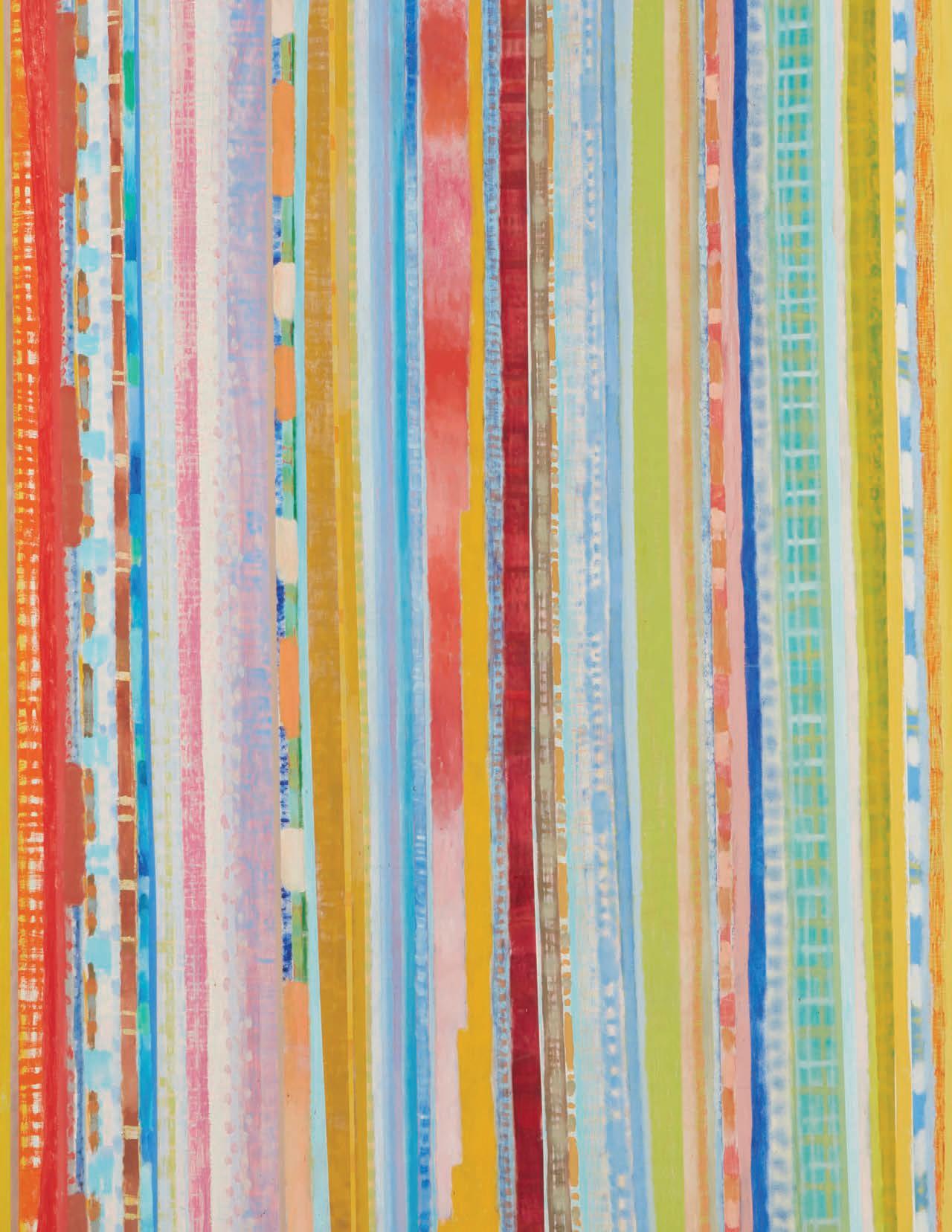












Pablo Picasso first met Georges and Suzanne Ramié, the owners of the Madoura pottery studio in Vallauris, France, in 1947. Picasso was known primarily as a painter at this point in his career. Yet, ceramics presented an entirely new set of artistic challenges he seemed eager to tackle head-on. Between1947 and 1971, Picasso produced 633 designs for ceramics at Madoura that the studio would later reproduce in limited editions. For decades, visitors to the region who stopped by the Galerie Madoura could purchase these ceramics by Picassoataffordableprices–many of which could be purchased for only a few hundred dollars each.
Countless examples of Picasso’s editioned ceramics eventually made their way to the United States, having been purchased by Americans who shipped them home after traveling abroad. Until very recently, the secondary market for Picasso ceramics --which consists of items that are being sold from a source/seller who did not participate in the creation of or initial sale of the object (such as Galerie Madoura) –consisted of sales made at very modest prices.
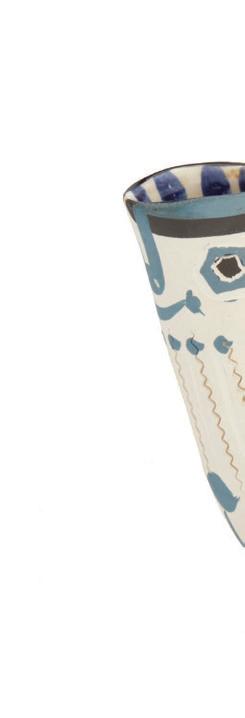
Pablo Picasso (1881-1973)
“Pichet
1954


Bernard Langlais (1921-1977)
“Plan with Blue,” 1968 Wood assemblage and acrylic on canvas With letterpress signature at lower center left: Bernard Langlais 81” H x 68” W x 2.625” D

$6,000-8,000
Provenance: Property of an Important New York Corporate Collection
“Intarsia in Brown, no. 1,” 1959 [diptych]

Oil, wood, and newspaper collage (verso) on panel
Each letterpressed lower left (left panel) and lower right (right panel):
Bernard Langlais; each signed again verso
Each Panel: 49” H x 47.75” x 1.75” D ; Overall: 49” H x 95.5” W x 1.75” D
$5,000-7,000
Provenance: Allan Stone Gallery, New York, NY Property of an Important New York Corporate Collection

4 Peter Blake (b. 1932)
“4 Man Up,” 2003
Mixed media
Appears unsigned 29.5” H x 10.5” W x 10.5” D
$15,000-20,000
Provenance: The artist’s collection
Waddington Custot Galleries, London, UK
Notes: This original sculpture was used as the maquette for a cast bronze edition of eight, plus one artist’s proof.
This lot is accompanied by an information sheet from Waddington Custot Galleries, London.
Peter Blake is an English pop artist who is famously known for co-creating the design for the Beatles album “Sgt. Pepper’s Lonely Hearts Club Band.” He is known as one of the most preeminent British pop artists. In 2002, he was knighted at Buckingham Palace for his services in art.



“Ferris Wheel,” 2004, from “High Fashion Crime Scenes” C-print face mounted to acrylic Edition: 4/5, printing date unknown Signed, titled, dated, and numbered on a silver-toned acrylic label affixed to the verso of the frame: Melanie Pullen 36” H x 54” W
$2,000-3,000
“Brigitte Bardot,” 1965 Archival pigment print on paper

Signed, titled and dated in pencil in the lower margin: Douglas Kirkland Image: 20” H x 20” W; Sheet: 22.375” H x 22” W $2,000-3,000
Notes: There is a work or inventory number written in pencil in the lower left margin corner, verso: CDK1-018
Fernand Fonssagrives (1910-2003)
“La Guetteuse,” 1936
Gelatin silver print on paper

Edition: 19/50, printing date unknown
Signed, titled, numbered and inscribed 7[in a circle]H in pencil, verso: F Fonssagrives, possibly in another hand; also numbered 10660-FF in pencil along the lower margin edge, verso
Sheet: 14” H x 11” W
$2,000-3,000
Provenance: Michael Hoppen, London, UK
Notes: We have also seen this image listed with the title “Joie de l’Ardeche, France.”
Elisabeth Sunday (b. 1958)
“The Tuareg, The Sahara Desert, Mali,” 2005 Silver gelatin print on paper Edition: 10/25

Signed, titled, dated, and numbered in pencil verso: Elisabeth Sunday Image: 20.125” W x 15” W; Sheet: 23.75” H x 19.875” W
$500-700
“Kate Moss, Backward Glance,” 2007 Hand glazed giclee print on paper Edition: 32/50, printing date unknown

Signed and numbered in pencil in the lower margin: Figgis Image: 19 H” x 13.75” W; Sheet: 23.375” H x 16.5” W
$1,500-2,500
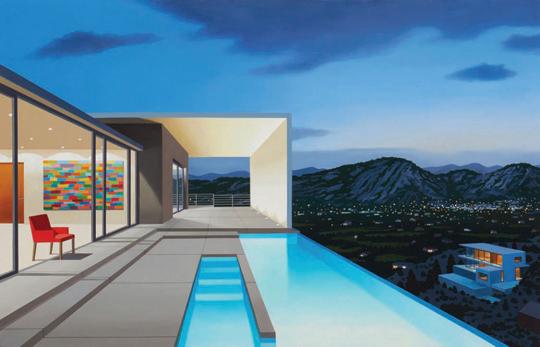
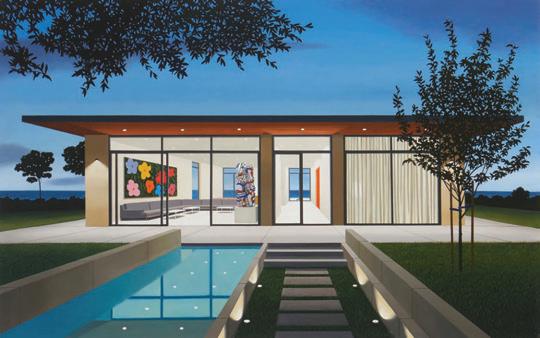
Tim Bessell (b. 1957)
Andy Warhol Surfboard (Flowers), 2015 Hand-shaped polyurethane foam, digital print, with polyester resin Edition: one of four artist’s proofs Signed in the digital print: Andy Warhol / Tim Bessell; signed again by Bessell, and titled, dated, and numbered: AP 2/4 on a label affixed verso 78” H x 21” W x 2.5” D
$4,000-6,000
Notes: Certificate of authenticity affixed verso: Signed by Tim Bessell with Andy Warhol Estate mark, dated June 22, 2015.

“Paul Newman and Robert Redford (ping pong),” 1968 Gelatin silver print on paper Edition: 5/15, printing date unknown Signed, titled, dated, and numbered, verso, according to the gallery label affixed to the frame’s backing paper Sight: 26.5” H x 28.5” W; Sheet: 30” H x 40” W $6,000-8,000
Provenance: Fahey/Klein Gallery, Los Angeles, California
Notes: According to the artist’s website, this image was shot in Durango, Mexico in 1968 and shows “Paul Newman and Robert Redford enjoying a little game of ping pong with director George Roy Hill during a break in the filming of ‘Butch Cassidy and the Sundance Kid.’ Photographed for ‘The London Sunday Times.’”

Jean Pigozzi (b. 1952)
“Elle Macpherson,” 1991
Archival pigment print on paper
Edition: 11/15 (there are also 3 artist proofs), printing date unknown
Signed on gallery label affixed verso: J. Pigozzi Image: 15.375” H x 22.875” W; Sheet: 20” H x 24” W
$1,000-2,000
Provenance: Gagosian Gallery, New York, NY (PIGOZ 1991.0053)

Weinstein
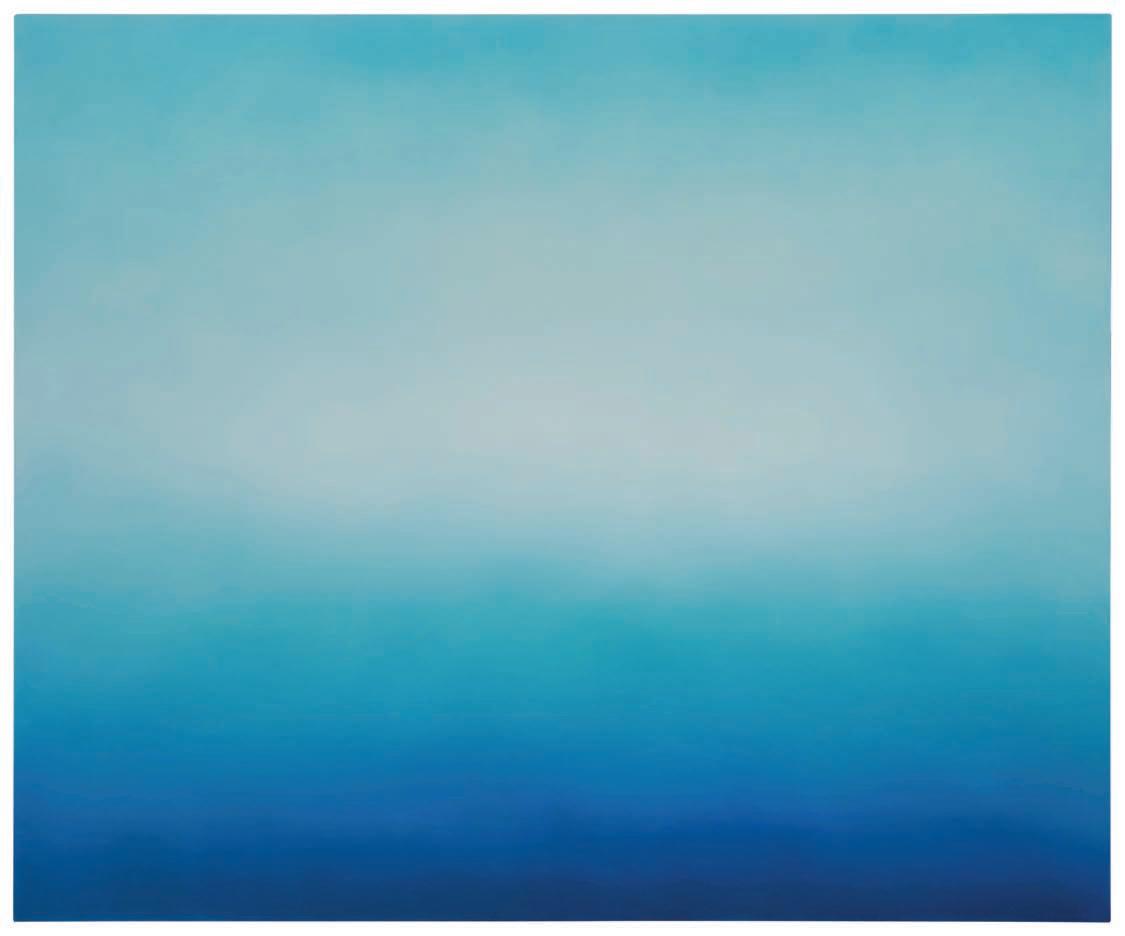
Weinstein (b.
Santa Monica,
2013 Oil on panel
Signed
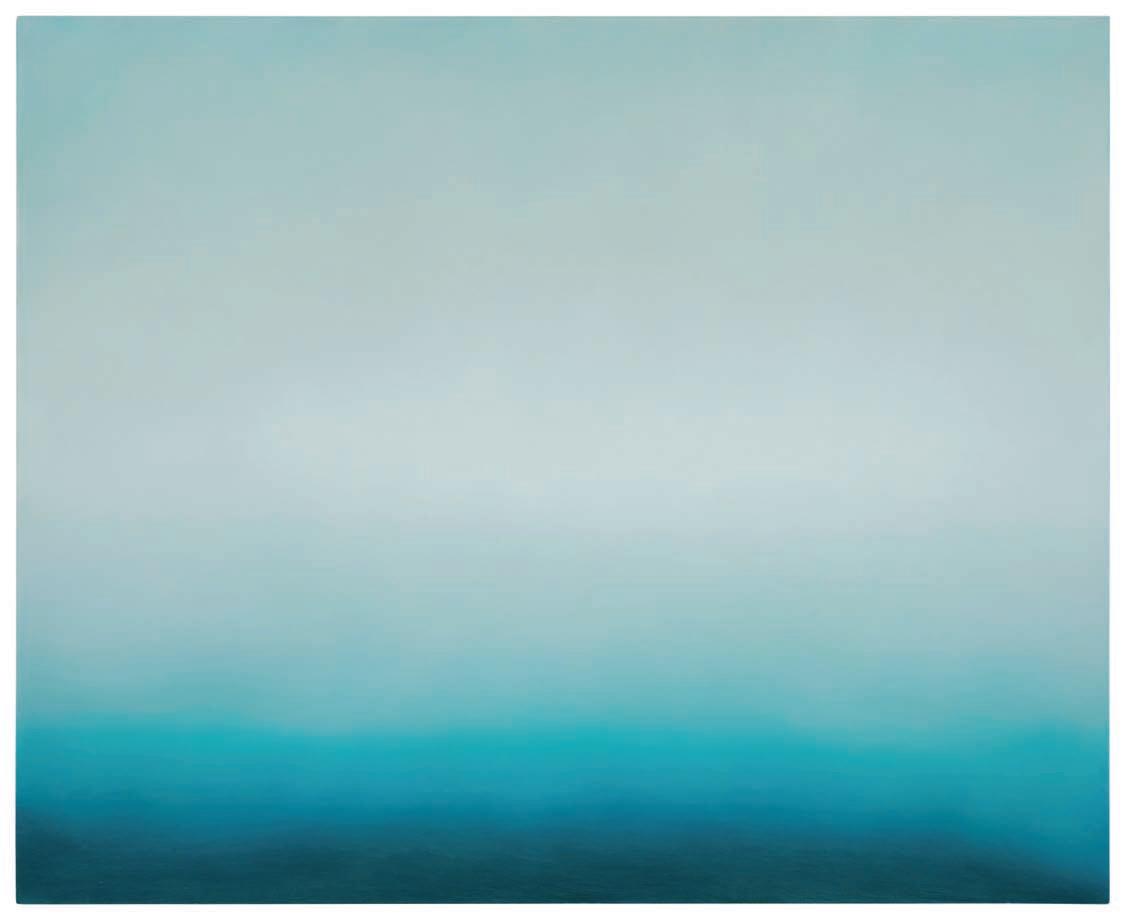
Nan Goldin (b. 1935)

“Misty and Joey at Hornstrasse, Berlin, 1992’
Dye destruction print on photographic paper Edition: 27/44
Signed, tittled, dated and numbered in black ink, verso: Nan Goldin; printed 1992, published 1996 Image: 16” H x 20” W; Including black border: 13” H x 19.5” W
$3,000-5,000
Notes: According to information provided online by the Victoria and Albert Musuem, London, about a different print from this edition of 44, the edition was printed in 1992 and published in 1996.
“The Pure Wonder C-Print photograph Edition: Artist proof
Signed and numbered 26.375” H x 39.875”
$3,000-5,000
Provenance: Steven


Known as Formento & Formento, who collaborate to create cinematic Diaries” series, ongoing since these images explore the dichotomies between tradition and the ultra-modern, a sense of tension, melancholy, taken from a noir Japanese

Formento, artists BJ and Richeille Formento are a husband and wife cinematic photographs such as this image from their “Japan since 1913, According to their website, “As outside observers, dichotomies that embody modern Japanó blurring the aesthetics ultra-modern, fantasy and reality. The captivating tableaus exude melancholy, and a quiet unease. Each image exists as if it were a still film, each solitary figure yearning for something unknown....”
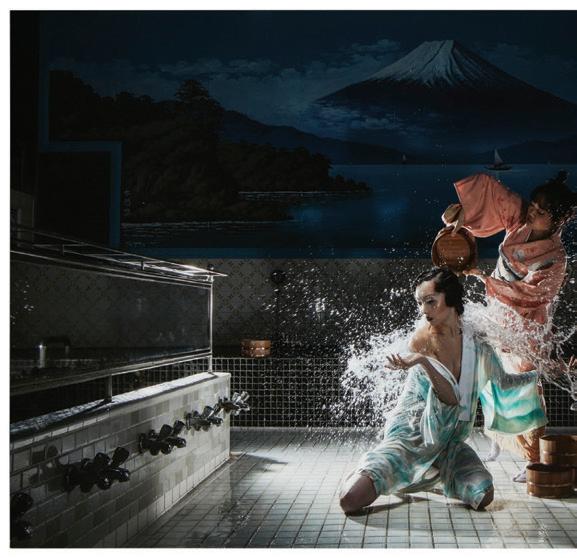
BJ & Richeille Formento & Formento (b. 1964 and b. 1975)
“Maaya XIV, Nishi-Sugamo, Japan,” circa 2013-18, from the “Japan Diaries” Archival pigment print on photographic paper on Lucite, as issued Edition: 1/7, printing date unknown Illegibly signed, presumably by both artists, and dated 2018 in ink on the label affixed verso; also with the artists’ blindstamp on the same label 40” H x 60” W
$1,000-2,000

20 Amanda Charchian (b. 1988) “Eros,” 2017
Chromogenic print on paper laid to matboard as issued Edition: 1/10, printing date unknown Signed and numbered in ink on a label affixed verso: Amanda Charchian; titled and dated on the same label Image/Sheet: 40” H x 26.75” W
$1,000-2,000
Provenance: Fahey / Klein Gallery, Los Angeles, California (CACH-006)
Notes: A gallery label affixed on the backboard of the frame lists both a variant title and variant date: “7 Types of Love, Eros 1,” 2015.

Amanda Charchian (b. 1988)
“Agape 2,” 2017
Chromogenic print on paper laid to matboard as issued Edition: 1/10, printing date unknown Signed and numbered in ink on a label affixed verso: Amanda Charchian; titled and dated on the same label Image/Sheet: 24.5” H x 16.5” W

$1,000-2,000
Provenance: Fahey / Klein Gallery, Los Angeles, CA (CACH-003)
Notes: An additional word “(Quadriptych)” on the signed label affixed to the verso of this work indicates that it was conceived as part of a four-part series. A gallery label affixed on the backboard of the frame lists the variant title, “7 Types of Love, Agape 2.”
Raymond Pettibon (b. 1957)
Untitled (Well, I said), 2015

Collage, ink, watercolor, pen and graphite on paper Signed and dated verso: Raymond Pettibone 26.125” H x 39.875” W
$25,000-35,000
Provenance: Courtesy of the artist, Regen Projects, Los Angeles, CA and David Zwirner, New York, NY Sold: Sotheby’s, New York, NY, May 15, 2015, Lot 435
Private Collection, Los Angeles, CA
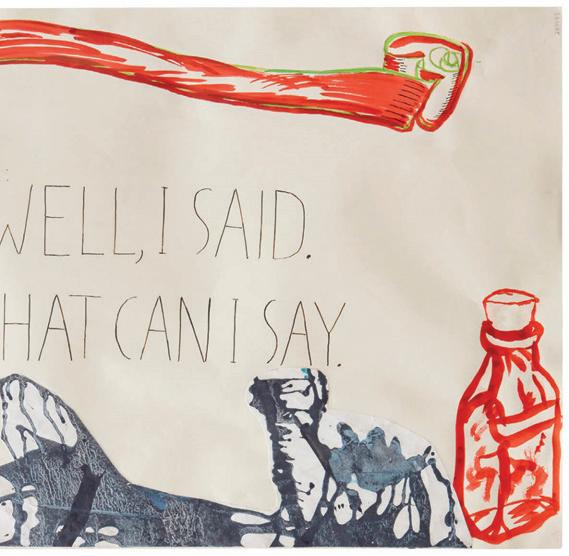

Max Steven Grossman (b. 1971)
“Arte,” 2015 Digital photo print mounted on Diasec Edition: 3/5 Appears unsigned; titled, dated and numbered by repute 48” H x 99” W x 1.25” D
$7,000-10,000
Provenance: Axiom Contemporary Fine Art, Scottsdale, AZ
Notes: According to the company’s website, Diasec is a worldwide trademark registered technique originally developed in Switzerland in 1969. It is a face-mounting process that allows photographs to be bonded directly and permanently to acrylic.

“(FBI) Blue,” 2006, is a strong something thought in silence C. McCraw, the Texas Homeland
“(INSD)(FBI)” which are acronyms Investigations.” Under his name has unmodified censor’s marks of each triptych, the word “DETAINEES”
“Guantanamo Bay.” Holzer censor’s marks. “(FBI) Blue” reports, exchanges concerning
Jenny Holzer has been known delivery of words and ideas passive reception of information sexuality, feminism, power, address the politics of discourse. to use information technology to build platforms, both in cyberspace cities around the world, including

strong example of Jenny Holzer’s goal of creating works that enlighten—illuminating silence and meant to remain hidden. This painting depicts an official document from Steven Homeland Security Director in the Office of the Governor (of Texas). Next to his name are acronyms for “Immigration and Naturalization Service Department” and “Federal Bureau of name it shows, “Sent: Monday, July 12, 2004 12:13PM.” Then, everything under the date marks covering most of the document, leaving only government acronyms. At the bottom “DETAINEES” is listed and near the end it reads, “Subject: GTMO,” the acronym for concentrates on documents that have been partially or almost completely redacted with Blue” is one of her many paintings in a series of work representing autopsy and interrogation concerning torture, as well as other topics found in official government correspondence.
known as a neo-conceptual artist since the 1970s, with the main focus of her work being the in public spaces. A political activist as well as an artist, Holzer’s aim is to disrupt the information from damaging sources. Often highlighting messages of violence, oppression, war, and death, Holzer favors utilizing the rhetoric of modern information systems to discourse. A pioneer in using public art as social intervention, she was one of the first artists technology as a platform for political protest. Her success has encouraged a generation of artists cyberspace and real space, for sharing political views. Holzer’s work has been featured in including London, New York, Los Angeles, Zürich, Hong Kong, and Berlin.
“(FBI) Blue,” 2006, triptych Oil on linen
The first and second element: Signed with the artist’s initials, inscribed and respectively numbered: JH1107.u ele [1-2]/3 on the overlap; The third element: Signed with the artist’s signature, initials, inscribed, numbered and dated on the overlap: JH1107.u ele 3/3 / Jenny Holzer Each: 33” H x 25.5” W x 1.5” D
$50,000-70,000
Provenance: Cheim & Read, New York, NY Yvon Lambert, Paris, France Sold: Phillips, New York, NY, May 15, 2019, “20th Century & Contemporary Art Day Sale,” Lot 00362
Exhibitions: New York, Cheim & Read, Jenny Holzer: Archive, May 12 - June 17, 2006, p. 107 (illustrated, pp. 46-48); Paris, Yvon Lambert, Nothing Follows, March 10 - April 14, 2007


Robert Natkin (1930-2010)
“Puerto Rican,” 1966 Oil on canvas
Signed on the stretcher: Natkin 82” H x 82” W
$10,000-15,000
Provenance: Allan Stone Gallery, New York, NY Property of an Important New York Corporate Collection
Exhibitions: San Francisco Museum of Art, September 23, 1969 - March 1970


Born in Idaho in 1925, Robert After receiving his BFA and California, Neuman – who greatly exhibiting his own paintings Fellowship, which brought him painter Willi Baumeister. After allowed him, his wife, and his
When considered in context paintings that Neuman completed and the Barcelona Paintings. now known as “the second “second generation”).
Neuman completed “Ciudad moved back to the United States where he was able to raise a of the ethos of the second generation movement could be, as well on diversity was practiced in this period was produced, displayed,
“Ciudad de Corazones” was early to mid-1960s. Over the group exhibitions at the Allan that are likely candidates for Stone Gallery, which ran from shown from January 26-February
According to another label Contemporary Art, Boston. occurred prior to the work’s several decades, the work has two exhibitions that occurred publicly displayed.
Many Abstract Expressionist on the open market. As such, first time in over fifty years.

Robert S. Neuman began what would become a nearly five-decade career in the early 1950s. Master of Fine Art degrees at the California College of the Arts and Crafts in Oakland, greatly admired the work of both Clyfford Still and Richard Diebenkorn – began paintings in juried shows of Abstract Expressionists. In 1953, Neuman was warded a Fulbright him to Stuggart, Germany where he studied under the noted German Expressionist After a brief return to the East Coast, Neuman was awarded a Guggenheim Fellowship that his young daughter to return to Europe and live in Barcelona, Spain for several years.
context of the artist’s oeuvre, it is possible to identify connections between both series of completed during his time in Europe – series which are now known as the Black Paintings Paintings. Yet, the painting is a rare and important example of a monumental work from what is wave” of Abstract Expressionism (Neuman himself is often considered a member of its “Ciudad de Corazones” (“City of Hearts”) shortly after he, his wife, and four-year-old daughter States and settled in Boston. His decision to build his career outside of New York City -a family and later teach at Harvard University – reflects what is now a clear characteristic generation of artists: a far greater willingness to broaden definition of what the well as who could participate and where they could live and show their work. This greater in more than just its aesthetics: it also broadly affected the manner in which work from displayed, and consumed around the world. was acquired from the esteemed Allan Stone Gallery in New York City sometime during the the course of his career, Neuman was featured in five solo exhibitions and at least two Allan Stone Gallery. Yet, there are two exhibitions noted in the gallery’s exhibition history for where this work was originally exhibited: either, the artist’s first solo exhibition at Allan from November 11-30, 1963, or “Robert S. Neuman: Selected Paintings from 1955-1959,” 26-February 17, 1966.
attached to the stretcher bars verso, the painting was also exhibited at the Institute of As no specific exhibition or date is mentioned, it seems likely that this exhibition being shipped to, exhibited at, and sold by Allan Stone Gallery. For most of the last has been on display in a company’s New York corporate headquarters. Apart from these occurred at unspecified dates, we do not know of any other times when this work has been
Expressionist paintings on this scale reside in institutional collections, and they appear infrequently such, we are incredibly pleased to be able to offer “Ciudad de Corazones” for sale for the
Robert S. Neuman (1926-2015)
“Ciudad de Corazones,” 1959-1960 Oil on canvas

Signed twice, titled, dated and inscribed verso: Robert S. Neuman / Boston 77” H x 146” W
$8,000-12,000
Provenance: Pace Gallery, New York, NY Institute of Contemporary Art, Boston, MA, 1960 Allan Stone Gallery, New York, NY Property of an Important New York Corporate Collection
Exhibitions: Institute of Contemporary Art, Boston, MA, n.d. Brandeis University, Walthamm MA, n.d.
Notes: Measuring 77 inches high by 146 inches wide, “Ciuadad de Corazones” is a painting by Robert S. Neuman is a rare and exemplary example of the type of monumental paintings for which members of the Abstract Expressionist are so today so well-known.
Neuman (1925-2006) that Expressionist movement
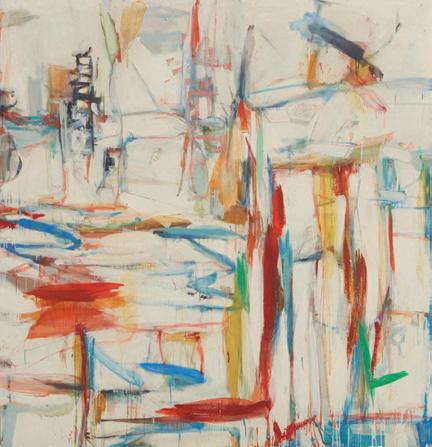
Robert S. Neuman (1926-2015)
1959 Oil on canvas
Important

28 Don Smith (b. 20th century) Untitled, Abstract Oil on plywood panel

Appears unsigned; inscribed with the artist’s name, D. C. Smith, return address, and recipient gallery’s address, all possibly in the artist’s own hand, verso 36.25” H x 48” W $1,000-1,500
Provenance: Allan Stone Gallery, New York, NY Property from an Important New York Corporate Collection Private Collection, California, acquired from the above
Colorful, bold, and gestural, a nod to his early career as handled iteratively. This 2019 round abdomen of the being, Vaguely abstract and yet decidedly the materiality of the paint Smith further interrogates venerable Smith explained his artistic you hate it because it defeats where his father was stationed eventually settling in Tennessee. additional coursework at Miami 1998. Josh Smith’s prolific broad experimentation in medium Trees, or the Grim Reaper approach to artmaking allows commerciality in the market. Los Angeles; Carnegie Museum d’art Contemporain de MontrÉal; New York.

gestural, Josh Smith’s paintings are readily recognizable. He frequently creates in series, perhaps as a printmaker. The present piece, “Turtle,” is among the many subjects the artist has 2019 work features a hybrid creature with features reminiscent of a bird and crustacean. The being, enhanced by a patchwork of color, alludes to the patterning on the shell of a tortoise.
decidedly figural, Josh Smith’s pastiche of animal forms is a vehicle by which to emphasize surface and the liminal space between high art and kitsch. By painting in large format, venerable taste and the merits of the long-esteemed medium. In a recent interview, Josh artistic practice: “I’m trying to make the worst thing possible. You might like it so much that defeats your preconceived notions of what Modernism is.” Josh Smith was born in Okinawa, stationed in the United States Army. His family moved regularly throughout his childhood, Tennessee. He later pursued a BFA from the University of Tennessee, Knoxville, and undertook Miami University in Ohio. Smith has lived and operated his studio in New York City since output extends to sculpture, printmaking, collage, and book production. He is known for medium and style and revisits themes over time. Motifs such as his abstracted name, Palm are examples of elements reappearing throughout his oeuvre, often over decades. This allows him to examine the implications of developing a distinct style and later witnessing its market. Smith’s work is held in numerous international public collections, including The Broad, Museum of Art, Pittsburgh; Centre Pompidou, Paris; Moderna Museet, Stockholm; MusÉe MontrÉal; The Museum of Modern Art, New York and the Whitney Museum of American Art,
Josh Smith (b. 1976)
“Turtle,” 2019 Oil on panel
Signed and dated verso: Josh Smith; titled on a label affixed verso; inscribed, in another hand, verso: JSP19103
48” H x 36” W
$50,000-70,000
Provenance: David Zwirner, New York, London, Hong Kong (SMIJO0749)
Exhibitions: New York, David Zwirner Gallery, “Josh Smith: Emo Jungle,” April 25 - July 19, 2019



John Killmaster (b. 1934)
Abstract, 1978
Enamel wall sculpture
Signed and dated in the orange element: Killmaster
Overall: 85” H x 83” W x 5” D approximately
$1,000-1,500


“The Summer Light,” 1969 Oil on canvas
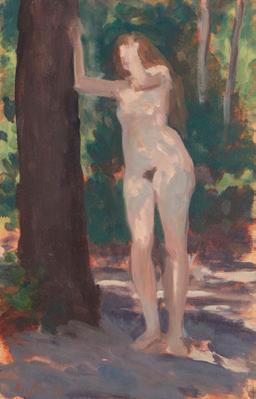
Signed and dated lower left: Resika; titled on a label affixed to the stretcher, verso 16” H x 10” W $2,500-3,500
Provenance: Peridot Gallery, New York, NY, #4413

Richard Miller (1922-2004)
Kneeling woman, 1964
Patinated bronze Signed and dated: RM © 1964 6.5” H x 6.25” W x 6” D
$1,000-1,500
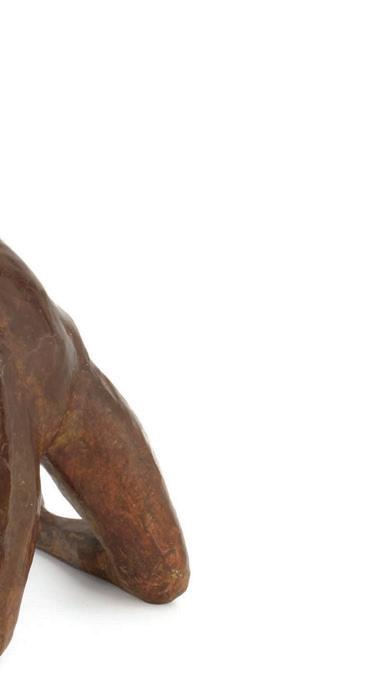
Herb Ritts (1952-2002)
“Female Figure in Black Sand, Hawaii (F),” 1988 Silver gelatin print on paper Edition: 4/4, printing date unknown Copyright ink stamped, signed, titled, and numbered in pencil, verso: Mark McKennaExecutive Director, Herb Ritts Foundation; with other numbered notations verso Image: 12.75” H x 10.75” W; Sheet: 13.75” H x 10.75” W $4,000-6,000


“Tatjana, Hawaii (e),” 1989
Silver gelatin print on paper Edition: 2/3, printing date unknown
Artist blindstamp: Herb Ritts; copyright ink stamped, signed, titled, and numbered in pencil, verso: Mark McKenna - Executive Director, Herb Ritts Foundation; with other numbered notations verso Image: 11. 625” H x 10” W; Sheet: 13.875” H x 10.75” H
$4,000-6,000

“Cindy Crawford, Hawaii (H),” 1988
Silver gelatin print on paper Edition: 2/2, printing date unknown
Copyright ink stamped, signed, titled, and numbered in pencil, verso: Mark McKennaExecutive Director, Herb Ritts Foundation; with other numbered notations verso Image: 13.25” H x 8” W; Sheet: 14” H x 11” W
$1,000-2,000

Edward Higgins (b. 1930)
Untitled, 1961 Steel and epoxy
Signed and dated in the casting to the base: E. Higgins - 1961 30.25” H x 36.5” W x 12” D
$3,000-5,000
Provenance: Property of an Important New York Corporate Collection


“Untitled,” from “Quelques fleurs pour des amis,” 1964 Lithograph in colors on paper
Edition: presumbly from the edition of 48 reserved for the artist and collaborators Inscribed in pencil at the lower right: “pour Ida Chagall et Franz Meyer, affectueusement Miro; Société Internationale d’Art XX e Siècle, Paris, pub.
Image: 12.375” H x 8.75” W approx.; Sheet: 14.875” H x 11” W”
Provenance: Sold: Bruun Rasmussen Online, Copenhagen, Denmark, “Modern Art and Design,” November 16, 2021, Lot 00680
Literature: cf. Cramer books 92
Notes: The regular edition was 150; there were also 75 deluxe copies with the suite of four lithographs printed on Japon nacre. Chagall’s daughter, Ida, married the art historian Franz Meyer in January of 1952.
Alexander Calder (1898-1976)

“Le Turban,” 1969 Lithograph in colors on paper Edition: 74/75
Signed in pencil lower right: Calder Image/Sheet: 43” H x 29.5” W
$4,000-6,000
Provenance: The Windsor Gallery, Beverly Hills, CA
Notes: The lot includes a copy of a 2015 invoice from The Windsor Gallery.
“Untitled” from “Série I,” 1952-53
Etching and aquatint in orange and black on wove paper, watermark Arches Edition: A Bon à tirer proof aside from the regular edition
Signed, dated “28/V/52.,” and inscribed “Bon à tirer,” all in pencil in the lower margin; inscribed “13” in pencil in the left margin; Atelier Lacourière, Paris, prntr.; Maeght Éditeur, Paris, pub..
Plate: 15” H x 17.75” W: Sheet: 17.875” H x 25” W
$8,000-12,000
Provenance: Timothy Yarger Fine Art, Beverly Hills, CA Private Collection, CA, acquired from the above, November 13, 2001
Literature: Dupin 78
Notes: Dupin indicates that the 13 editioned impressions of this image were printed on Arches paper measuring 19.75” H x 26” W. Nevertheless, this “Bon à tirer” example appears to retain its full margins, albeit on a slightly smaller sheet of the same type of paper.
The plates for “Serie I” were executed by Miró at Stanley W. Hayter’s Atelier 17 in New York, then printed and published in Paris.
Joan Miro, born in Barcelona in 1893, was a crucial figure in the Modernist movement. Miro moved to Paris in 1920, where he met artists such as Pablo Picasso and Andre Breton, the self-proclaimed founder of the Surrealist movement. Connecting with these artists and others significantly affected Miro’s style and artistic development.
Miro described his works as being painted in stages. First, he would utilize a method of artmaking known as automatism to develop an image in free form by letting his unconscious guide his hand. While Miro was in some ways drawing from his imagination, he also allowed the landscape and everyday objects in the surrounding environment to influence his work. The second stage, far more precise and intentional, involved Miro’s conscious addition of minor touches and details. The results were highly vibrant, colorful, and playful -- as seen in “Acrobats in the Night Garden,” or the five plates from “Gravures pour une exposition” series, also featured in this sale.
Miro consciously tried to avoid over conceptualizing his artwork throughout his career, instead choosing to create images that could not easily be associated with a single art movement or style. Instead, he allowed his work to be rebellious -- he sought to create artwork that functioned as commentary on social and political events happening around him, which contributed to him being considered one of the most influential artists of his time.
Miro spent most of his career between Paris, France, and Mont-Roig del Camp, Spain, before passing away in 1983.

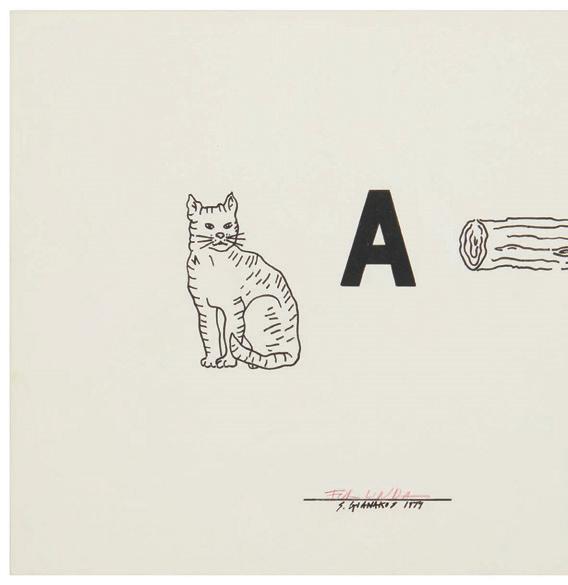
(b. 1938)
Cat - A - Log, 1979
Black ink and red pencil on artist’s board
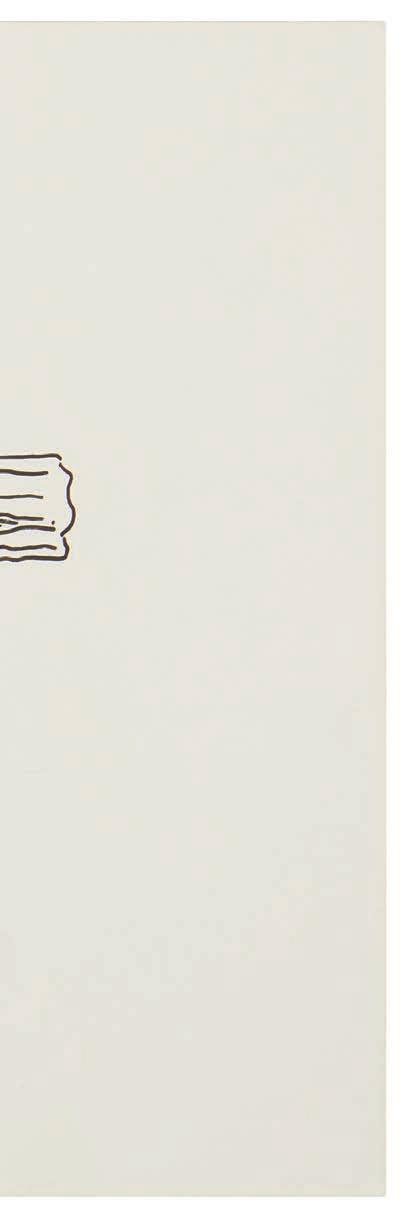
Signed, dated, and inscribed “For Linda,” lower center: S. Gianakos 15” H x 20” W
$3,000-5,000
Provenance: Estate of Linda Cathcart, Montecito, CA
42 Margaret Keane (1927-2022)
Untitled, (Girl with a yellow hat), 1957 Oil on canvas board

Signed and dated lower left: Keane 24” H x 17.75” W $5,000-7,000
Provenance: The Artist Private Collection Southern California, acquired from the above circa 1957 Through descent in the family, Private Collection, Santa Barbara, CA


45 Wolf Kahn (1927-2020)
Untitled landscape Pastel on paper

Signed and dated lower right: Kahn Sight: 11.75” H x 17” W; Sheet:12” H x 17.875” W $1,500-2,500
Provenance: Allan Stone Projects, New York, NY (Stone 9085A) Property of an Important New York Corporate Collection Private Collection, California (acquired from the above)
Drawn to the arts at an early encouragement from his interior imprisoned by German forces. with the local soil to create efforts as an artist. He asked Compagnie des Arts Francais, and designers. His ceramics describing the female body repeated throughout his ceramic
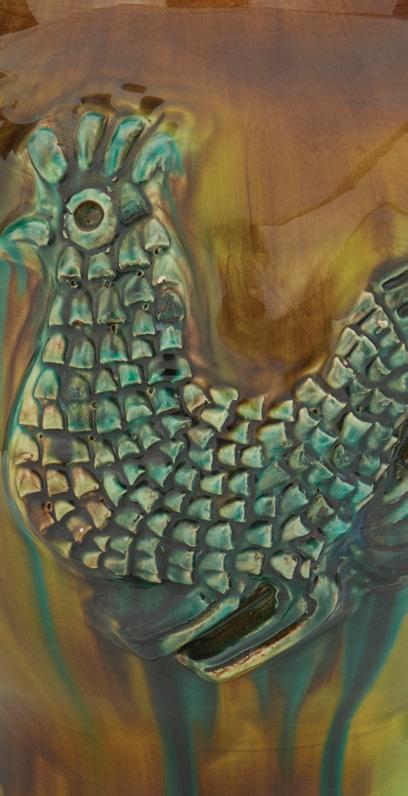
Jouve early age, Georges Jouve attended the Ecole Boulle in Paris at age seventeen with interior designer parents. Unfortunately, fighting in WWII resulted in Jouve being forces. It was not until after his escape that he moved to Paris in 1944 and began working create clay he would use in his ceramics. French designer Jacques Adnet recognized his asked Jouve to participate in the “La Ceramique Contemporaine” exhibition hosted by the Francais, placing him side by side with some of France’s most influential mid-century artists ceramics range from simplified blocks of color and line to anthropomorphic forms visually body in clay as well as to animal forms. This vase pays tribute to the rooster, a theme ceramic oeuvre.
Georges Jouve (1910-1964)
Rooster vase, circa 1950s Glazed ceramic Signed with incised artist’s mark to underside and inscribed: Made in France 12.25” H x 10.5” Dia. $5,000-7,000


Jay Milder (b. 1934)
Oil on canvas


49 Lea Nikel (1918-2005) Untitled, 1987 Oil on canvas

Signed and dated, verso: Resnick; titled on a label affixed to the stretcher 30” H x 30” W $15,000-20,000
Provenance: Texas Gallery, Houston TX Estate of Linda Carthcart, Montecito, CA Collection of Robert and Dolores Cathcart, by descent from the above
Notes: Linda Cathcart was involved with art in various ways throughout her professional lifetime. One of her most prominent positions was as the executive director of the Contemporary Arts Museum Houston from 1979 until 1987.

Rodger Allen Mack (1938-2002)
Untitled Polished and patinated bronze on a steel base Incised signature near the bottom of the sculpture: R. Mack Sculpture: 36.5” H x 9” W x 11” D; Base: 10.5” H x 10.5” W x 10.5” D $2,000-3,000
Provenance: Property of an Important New York Corporate Collection

James Wenkle (1936-2002)
Field Sculpture Brass on an enameled steel base Appears unsigned Sculpture: 28” H x 8” W x 9” D; Base: 0.25” H x 6” Dia. $1,000-1,500
Provenance: Property of an Important New York Corporate Collection
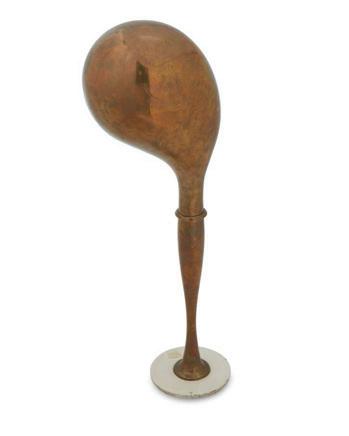
Marcos Grigorian was born to avoid the massacres due Grigorian was notable for being Accademia de Belle Arti in graduating in 1954, Grigorian a prominent teacher at the Tehran, he was placed as the introduced new etching techniques and sculptures in Tehran was executed pieces of modernist humans and the nature surrounding he showed his clay and straw mediums. Grigorian introduced an artist was a combination art, local textures, experimentation,
The current painting is an abstract experimentation with “earth used to draw the viewers’ attention. inconsistent and quick brush Grigorian. There is much action brush. However, running horizontally of various inconsistent lengths. paint is still drying. To the right However, the viewer can see uncontrolled strokes. Just like but they are just in black paint. elements.
Marcos Grigorian was a prominent contemporary art, combining mark in Iran, but his impact creating earth art; abstraction, visual components that make filled with elements of experimental century visual culture.

Grigorian in Kropotkin, Russia, in 1925 to an Armenian family. Grigorian’s family escaped from Kars to Kars’ capture by Turkey in 1920. In 1930 Grigorian and his family moved to Tehran. being an artist, teacher, collector, and gallerist. In 1950, Grigorian studied at the Rome and studied with Roberto Melli, who was a cubist sculptor (Noorani, n.d.). Upon Grigorian moved back to Tehran, where he opened a commercial gallery. Thus, becoming Fine Arts Academy, where Grigorian taught students about folk art. Continuing, in the “head of the graphic department at the Ministry of Culture and Art. While there, he techniques to students” (Abramian, p.80, as cited in Fouladvand). A group of free painters was organized and founded by Marcos Grigorian. As a multifaceted artist, Grigorian modernist pop art and experimented with Earth art to symbolize the connection between surrounding us. In 1977, Grigorian left Iran and moved to Yerevan, Armenia, and there straw work in 1991, further proving his accomplished versatility when practicing various introduced Iranians to contemporary and unique art as a worldly artist. Marcos’s expression as of skillful drawing techniques, themes of immigration, ethnic textures, modernism, pop experimentation, and abstract elements.
abstract piece with an earthy color palette, which confirms the influence of Grigorian’s “earth art.” A minimalist range of colors of red, black, grey, and brown shades is beautifully attention. The mixture of brown and grey paint in the background is painted with brush strokes to create a textured and layered setting, an important artistic element of action in the painting itself, the red paint that runs vertically with the swift stroke of the horizontally from the first red color, many small brushstrokes run down the vertical line lengths. Each line looks to have slow beaded drips starting to occur, as an illusion that the right of the red vertical paint stroke is a black vertical brush mark; each mark looks similar. see the lines from the brush while using the black paint; they look more like swift and like the left side of the painting, there are also horizontal lines running on the right side, paint. With no clear form or figure, it is a testament to Grigorian’s exploration of abstract
prominent figure in the art world who was influential in introducing many Iranians to combining folk art, and reawakening the local ethnic elements. Grigorian did not only leave his spanned multiple countries. This abstract painting stands for Grigorian’s experience in abstraction, texture, conceptual arrangement, and building swift brush mark management are all make this a fascinating piece. Those who view this piece are witnesses to a unique painting experimental treatments of the surface he created that were so influential to twentieth-

Untitled abstract, 1956 Oil on canvas
Signed and dated upper left: Grigorian; signed and dated again, and with the artist’s inscription and ink stamps, verso 31” H x 23” W
$30,000-40,000
Provenance: The artist Private Collection, Los Angeles, CA, acquired from the above, circa 1960
Attributed to Marcos Grigorian (1925-2007)
Abstract, circa 1950s Oil on Masonite
Appears unsigned; with the artist’s inscription and ink stamps, verso 57” H x 5.5”-7.25” W
$20,000-30,000
Provenance: The artist Private Collection, Los Angeles, CA, acquired from the above, circa 1960

After Georgi Zelma (1906-1984)
“Tank Rodina v boiu za Stalingrad” [“Motherland” Tank in the Battle for Stalingrad]
Gelatin silver print on paper

From the edition of unknown size and date
Unsigned; annotated in pencil, possibly in another hand, verso: GZL0073 Image: 20” H x 30.25” W; Sheet: 23.5” H x 33.625” W $500-700
Notes: T-34 Tank, Motherland, Stalingrad, January 31, 1945
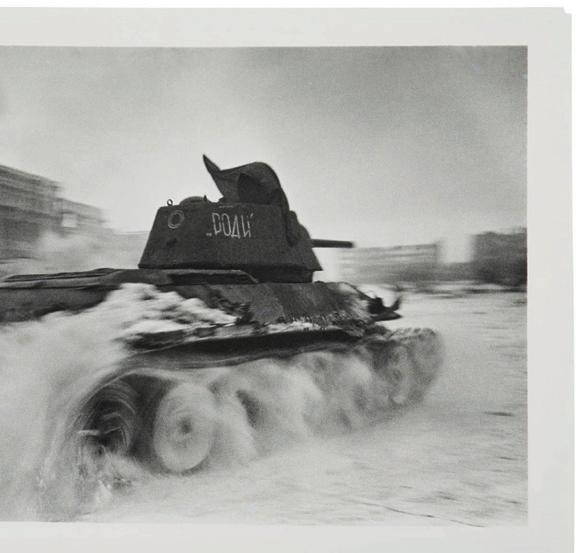
Rosangela Renno Gomes, was Renno received a bachelor’s degree for her doctorate in 1997 about experience of her doctorate thesis, “work consists of photographic Renno creates a space where of the downtrodden and the vanquished” were the two figures that influenced of connections and reinterpretations
The current photographs are created by the overlay of multiple “records of travels, views of cities, use “juxtaposing photographs nature, tiny details,” (Molina,

Renno’s present work is a unique images were printed in a limited black shadow as a visual contrast. of the building itself. An intriguing image has a background archival overlay image looks like a scene the foreground overlay is of an peeking out at the top. Looking image, there are multiple horse from an elevated perspective overlay of these two images is background, an oil rig at the center kitchen.
Renno and her body of works New York, the Guggenheim Museum, the environment. Deciphering into a space beyond the surface audience to reflect on the living
Renno was born in 1962 in Belo Horizonte, Minas Gerais, Brazil. She is a prominent Brazilian artist currently working in Rio de Janeiro. In 1986, degree in architecture, and in 1987 she received a degree in Fine Arts from the Guignard School. In addition, she authored a thesis about the reproduction of photographic negatives from the archives of the Sao Paulo Penitentiary Museum (Fafich, 2017). With the thesis, it would be a turning point in her career, where archival photos she found would be a dominant part of her work. Gomes’ photographic images from public and private archives that question the nature of an image and its symbolic value” (Renno & Takahashi, 1998).
interest arises in the viewer. Most notable is a quote from Renno herself about the purpose of these types of work, “the little stories vanquished” (Renno, 2004). Vilem Flusser, a Czech photo theorist, and Andreas Muller Pohle, a German photographer, and theorist, influenced Renno’s decision to recycle photographs. Renno’s use of archival media and creating new images “introduces another sphere reinterpretations as she recontextualizes them, offering us the vision of yet another imaginary universe” (Silverio, 1).
six digital prints from a more extensive collection of 42 images. The name of this collection is Materia de Poesia. These images are multiple old slides and influenced by Manoel de Barros, an influential poet in Brazil. With the discovery of these old slides were visual cities, people from another time” (Molina, 2010). Renno’s development when creating these new images for Materia de Poesia is to photographs that would be “garbage” - or, referring to Barros’ poetry, Rosangela makes verses from what would be an insignificant element of 2010).
unique display of archival photography, especially with many different images to create an overlaying product. In addition, the current limited color palette; for instance, some are saturated in red with black shadows to contrast, while some pieces are blue and have a contrast. In more detail, the first image’s most prominent details are that the background looks like a cathedral, with the pointed arches intriguing part of this piece is the foreground from a different image used as the overlay: a female wearing a bathing suit. The second archival photo of the cityscape, the more prominent features being a couple of taller buildings on the left of the image. However, the scene inside a building. The third image is a background photograph of the inside of what looks to be an ancient amphitheater, and an ornate gold emblem directly in the middle. The fourth image has a background of a marina with buildings and the main headsail Looking at the overlay image, a man on a horse is shown directly in the center of the image itself. When looking at the bottom of the horse hooves and legs, but the viewer cannot see the bodies of the horse because of the shadow. Renno’s fifth image has a background of a town filled with buildings with Spanish-style roofing. Looking closer, a lady in the very center overlaps the photograph. The is fascinating; the city landscape juxtaposes the living beings presented. Lastly, the six images have an industrial scene in the center of the background, and even old oil glass streetlamps are shown. The overlay image is a seated figure smiling inside a have been shown not only widely in Brazil but also on an international scale. From Tate Modern, the Museum of Modern Art in Museum, Museo Nacional Centro de Arte Reina Sofia, and many more. The present images juxtapose the image’s relationship with Deciphering what is happening in these images might not be clear, but “there is a precise sense of where they are heading: out of the frame, surface where they are supported, into perception itself” (Biennale de Sao Paulo, 1994). Renno’s execution of these images allows her living world, have a glimpse of the past, and divulge into our instinct of being curious individuals.
“Usar algumas palavras que ainda nao tenham idioma (Group R) da Serie Materia de Poesia (Para Manoel de Barros),” 2013
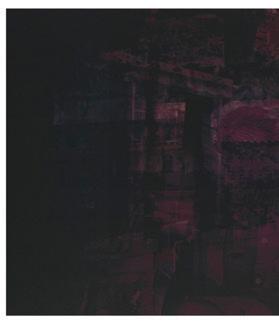
The set of six inkjet prints in colors on Canson Rag Photographique paper laid to aluminum panels, as issued The first image signed and numbered 1/6 in ink on the label affixed to the frame’s backboard: Renno Rosangela; each of the other images initialed and numbered 2/6-6/6, respectively, in ink on the label affixed to the frame’s backboard
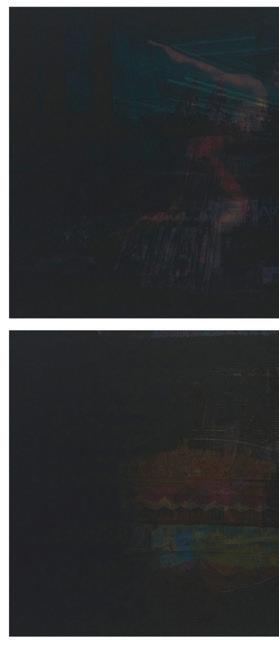
Sight of each: 29” H x 42.5” W
$30,000-50,000
Provenance: Galeria Vermelho, San Paolo, Brazil

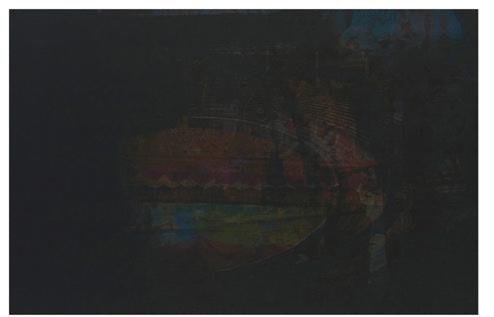

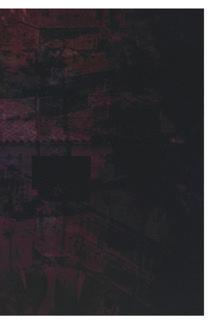

“Now and Zen 2, El Mirage,” 1999
Silver gelatin print on paper
Edition: 3/7, printing date unknown
Copyright ink stamped, signed, titled, and numbered in pencil, verso: Mark McKennaExecutive Director, Herb Ritts Foundation; with other numbered notations verso Image: 12.75” H x 10.5” W; Sheet: 14” H x 11.25” W
$4,000-6,000
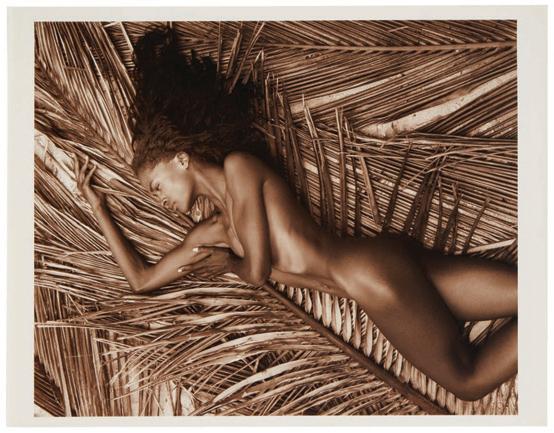
“Karen Alexander, Bahamas (B),” 1993 Silver gelatin print on paper Edition: 2/6, printing date unknown
Copyright ink stamped, signed, titled, and numbered in pencil, verso: Mark McKennaExecutive Director, Herb Ritts Foundation; with other numbered notations verso Image: 12.5” H x 10.25” W; Sight: 13” H x 10.75” W Image: 12.5” H x 10.25” W; Sheet: 14” H x 11” W $2,000-3,000
“Carla Bruni — Detail, Point Dume (A),” 1992 Silver gelatin print on paper Edition: 2/3, printing date unknown Artist blindstamp: Herb Ritts; copyright ink stamped, signed, titled, and numbered in pencil, verso: Mark McKenna - Executive Director, Herb Ritts Foundation; with other numbered notations verso Image: 11.75” H x 10.25” W; Sheet: 14” H x 11” W $2,000-3,000

“Table Monogold,” designed 1961/1963 Gold leaf, glass, Plexiglass, wood, and steel With signed placard of authenticity affixed to the underside; serial no. CCV-GFRE 14.25” H x 49.25” W x 39.25” D $15,000-20,000

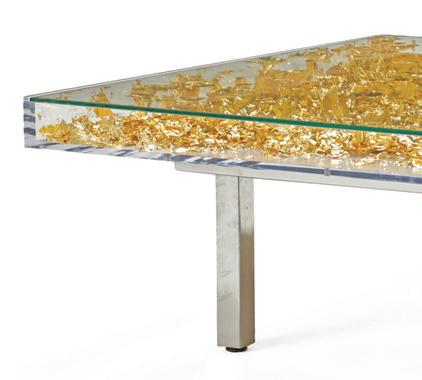
Provenance: Private Collection, Hidden Hills, CA

Notes: On April 28, 1928, Yves Klein was born to parents who were notable abstract painters in Paris. From 1942 to 1946, Klein studied at the Ecole Marchande, and the Ecole Nationale des Langues Orientales. He would become a pioneer in the development of performance art and a prominent bridged the gaps between Minimalism, Pop Art, and the Nouveau Realism movement.
Klein’s techniques and use of raw pigments in paintings, performances, and furniture design are highly regarded within the art and design industry. garde performances were those in which he arranged for naked women covered in pigment to roll their bodies over canvases in public settings. pigments that he then affixed to canvases and panels. In 1963, Klein began producing clear Plexi-glass tables filled with powdered pigment piles trademarked International Klein Blue (IKB), a deep shade of ultramarine as seen in the following lot. His use of pure pigment as a viable medium art’s relationship to both color and material in ways that continue to influence visual artists, performance artists, and interior designers working today.
Ecole Nationale de la Marine prominent visual artist whose work industry. Arguably, his most avantHe also coated sponges in raw piles in shades of light pink and his medium challenged long-held beliefs on today.

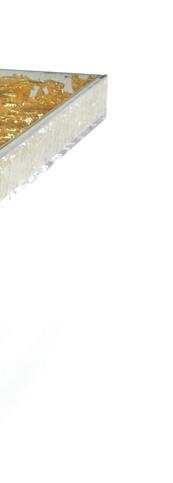

62 Masao Yamamoto (b. 1957)
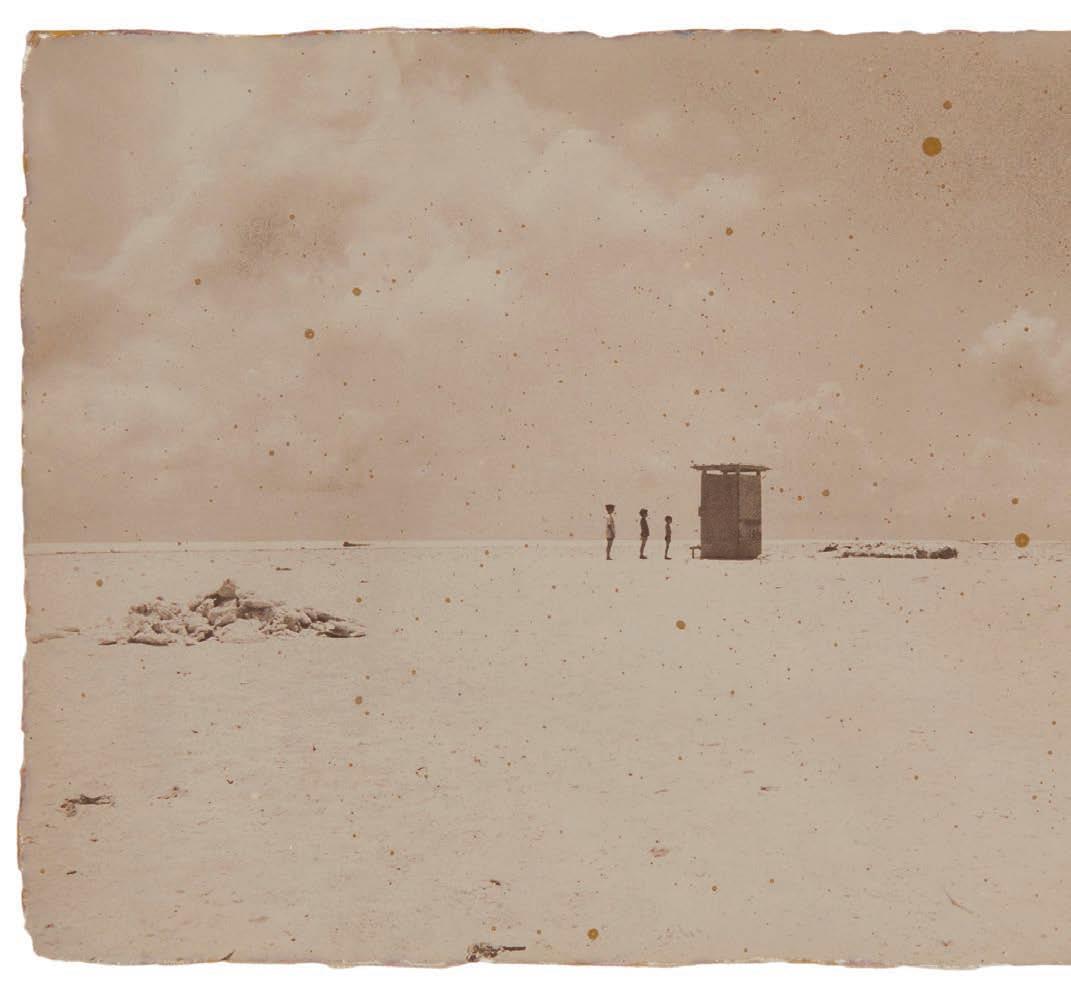
Figures in the desert, #856
Gelatin silver print and mixed media on paper Edition: 12/40
Signed, numbered, and editioned verso with artist’s stamp: Masao Yamamoto Image/Sheet: 4.25” H x 6.375” W
$600-800
Masao Yamamoto (b. 1957)
Snow Monkey, #1275
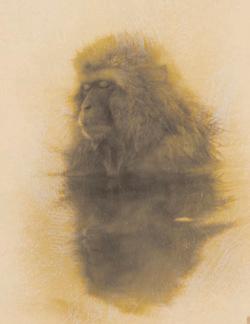
Gelatin silver print and mixed media on paper Edition: 10/40
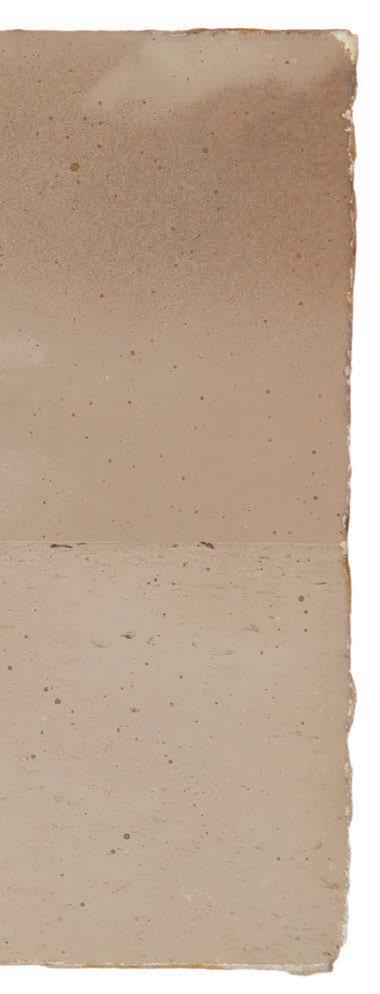
Signed, numbered, and editioned verso with artist’s stamp: Masao Yamamoto Image/Sheet: 2.375” H x 1.625” W
$500-700


Judy Chicago’s Transformation Painting (1973) is a part of the cannon of feminist art history and history at large. The work was a key piece in the 1973 landmark exhibition “Womanhouse” in Los Angeles. This was the first ever feminist exhibition to gain national attention, with major reviews in TIME magazine amongst other important publications, and set the precedent for Chicago’s seminal piece, The Dinner Party (1974-79), which Chicago started a year later.
Chicago emerged on the Los Angeles art scene after her completion of UCLA’s MFA program in the late 1950s, with strong work that adhered to the au courant, namely the New York Minimalists and the California Light and Space movement. Cowed by the “boys club” mentality of the art world at the time (her encounters with the Ferus Gallery “Cool School” frequently ended in tears) she initially adhered to the “if you can’t beat them, join them” adage, attempting to appear more macho by cutting her hair short, wearing boots and smoking cigars. Her work of this period—flashy, spray-painted car hoods using techniques learned at an auto-body school—bolstered this masculine guise. At the same time, the imagery was undeniably feminine, with bold, abstract shapes that could be interpreted as butterflies, vulvas, and other parts of a biological woman’s anatomy.
Finally disillusioned by the art world’s patriarchy, as evidenced by her male colleagues’ ascendence to success while her career remained stagnant, Chicago’s mind-frame changed to something more like “if you can’t beat them, abandon them.” Her “Lifesavers” series of this period embrace womanhood, with round shapes made up of various lines, alternately quivering and vibrating. In what Chicago and other feminist artist would later term “central-core” imagery, works like these presented a woman’s sexuality as positive and powerful. Playing with perception, light and color, the series was connected to the Light and Space movement dominated by men such as James Turrell, Robert Irwin, Larry Bell and others, but Chicago’s shapes and shades went beyond simply the exploration of visual perception to also represent a visualization of sexual pleasure, the female body and its energy. Chicago revealed to the influential art critic and curator Lucy Lippard in a September 1974 Artforum interview: “I called them lifesavers because in a way they did save my life by confronting head-on that issue of what it was to be a woman.”
Evolving from the imagery first employed in her “Lifesavers” series, Transformation Painting comes at a juncture of fervent feminist and self-actualizing activity in Chicago’s life. The work’s pendant painting, The Liberation of the Great Ladies, is owned by the Rachofsky Collection in Texas, and is a promised gift to the Dallas Museum of Art. Like the car hood paintings and the “Lifesavers,” the abstract imagery of Transformation Painting allude to the feminine: butterflies, waves of female energy, flora appearing like female sexual organs a la Georgia O’Keeffe. Chicago herself had undergone a transformation and liberation several years prior. In October of 1970, Chicago took out a full page ad in Artforum, renaming herself Judy Chicago—née Gerowitz by marriage; née Cohen by birth—denouncing and divesting from the patriarchy. In that same year, she, along with several other artists, had established the first ever Feminist Art Program, first at California State University and then at the California Institute of the Arts (Cal
Furthermore, ambitious room installation, honors table, elaborately accessories Dinner not only interiority excerpt revealing: It has taken and, like because art community, didn’t care But it won’t, Like The honesty It is not example, didactic, rigueur required the DeYoung artworks history, — Jennifer
the year after. Further institutionalizing support and long-term development of feminist for posterity was the founding of the Feminist Studio Workshop as part of the Women’s Building in 1973, an experimental space where female artists could explore feminist theory and work.
Furthermore, Transformation Painting was created just one year before embarking on her most ambitious and well-known project, The Dinner Party (1974-79). The landmark, multi-media, full installation, permanently housed and displayed at the Brooklyn Museum since 2007, women from mythology and history in the form of a massive, triangular shaped elaborately set with hand-embroidered table runners, handmade ceramics and other accessories created by Chicago and hundreds of female workers and volunteers. While The Party is public facing and collaborative—a visible show of female strength and power only in its content but in its making—Transformation Painting gives insight into the artist’s interiority and frame of mind during this time, her innermost thoughts, and vulnerabilities. This excerpt of text that Chicago transcribed in pencil between the rows of imagery is diaristic and revealing:
taken me almost eleven months to make thirteen paintings. Now, the series is completed like always, it’s a little like dying. I feel empty and tired yet elated. I also feel bad today because two of my closest friends had a dinner party with a number of women from the female community, and they didn’t invite me. It made me feel hurt and rejected and as if they care about me. Now, I want life to stop for a while so that I can rest and stop struggling. won’t, and I guess I’ll hang in there.
The Dinner Party, Transformation Painting demonstrates strength as well, albeit in its honesty and vulnerability.
not unheard of for an artist to be unappreciated during their time. The Dinner Party, for example, was derided at the time of its debut by critics as being reductionist and overly didactic, even kitschy or simply bad art. Now, Judy Chicago and The Dinner Party are de rigueur material in art history courses, entering Janson’s History of Art in 2006, a tome of required reading. Chicago’s first ever museum retrospective was mounted just last year at DeYoung Museum of San Francisco. Judy Chicago has entered the historical canon and artworks like Transformation Painting show Judy Chicago to not only be on the right side of history, but to have forged the path.
Jennifer S. LiJudy Chicago (b. 1939)
“Transformation Painting,” 1973
Sprayed acrylic and felt-tip pen on unprimed canvas
Signed lower left: Judy Chicago; dated lower right: 1973 40” H x 40” W
$80,000-120,000
Exhibitions: Los Angeles, The Woman’s Building, 1973
San Francisco, Museum of Modern Art, “Painting and Sculpture in California: The Modern Era,” September 3November 21, 1976, no. 244
Washington, National Collection of Fine Arts, Smithsonian Institution, “Painting and Sculpture in California: The Modern Era,” May 20 - September 11, 1977, no. 244
Literature: Henry T. Hopkins et al., “Painting and Sculpture in California: The Modern Era” (San Francisco: San Francisco Museum of Modern Art, 1977), p.165, fig. 244.

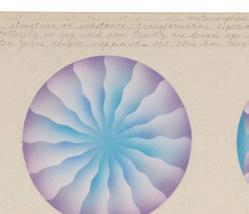

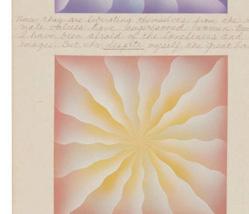



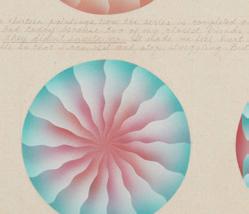


Jean-Michel Othoniel (b. 1964)
“Collier Rose,” 2016 Murano glass and steel wire Appears unsigned 39.25” H x 20.375” W x 4.625”

$18,000-22,000
Provenance: Kukje Gallery, Seoul,
Seoul, South Korea
Jean-Michel Othoniel (b. 1964)
“Amants suspendu,” 2014 Murano glass and steel wire Appears unsigned 26” H x 6” W x 6” D $15,000-20,000
Provenance: Commissioned by artist Galerie Perrotin, Paris, France
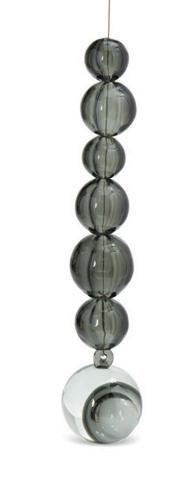
67 Tony Lewis (b. 1986)
“Chunk,” 2015
Pencil, graphite powder, and tape on four adjoined sheets of paper

Appears unsigned Image/Sheet: 83.25” H x 71.25” W
$8,000-12,000
Provenance: Jessica Silverman Gallery, San Francisco, CA Property from an Important Contemporary Collection, acquired from the above Phillips, New York, NY, “20th C. & Contemporary Art Day Sale,” November 13, 2019, Lot 492
Private Collection, Los Angeles, CA, aquired from the above
Exhibitions: San Francisco, Jessica Silverman Gallery, Synecdoche: Julie Beaufils, Vincent Fecteau, Henry Gunderson, Tony Lewis, B. Ingrid Olson, July 1 - August 22, 2015


Gilded Tanks, Planes, and Helicopters, 2015 LED lights and mixed media, electrified
Initialed and dated on the verso of the frame’s upper edge: PG + 15; initialed again on the underside of the frame’s lower edge 48” Dia. x 3.25” D
$10,000-15,000

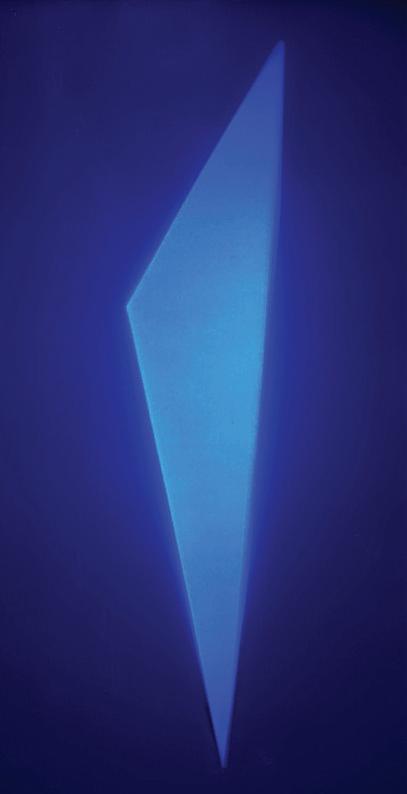
A field of blue light emanates geometric shapes, James Turrell’s of Mark Rothko. In lieu of paint upon holographic projection. ceremonial manner. The present shapes appear to float weightlessly, sculptural. James Turrell was light with religious experience. upbringing. Native to Los Angeles, and Space Movement in the were inspired by Minimalism sunny, atmospheric surroundings. burgeoning aerospace industry research on human perception, discipline informed his expanding significance that pervaded his materials associated with new his circle appropriated the concept produce artwork capable of and the Light and Space artists institutions worldwide, including County Museum of Art, and Turrell has been working on
Turrell emanates from a backlit square pierced by an obtuse triangle. While composed of simple Turrell’s “Hologram 10” evokes an expansive, ethereal ambiance reminiscent of the work paint and canvas, however, Turrell’s homage to the master of the prior generation relies projection. His striking installation dramatizes light and heightens form in a theatrical, even present work, executed in 2008, relates to a broader series exploring visual illusion. His weightlessly, yet their dimensionality, entirely defined by radiating light, renders them was raised in the Quaker faith, a contemplative religion that privileges silence and equates experience. It has been suggested that the spiritual quality of his work may be a nod to this Angeles, Turrell was later among an avant-garde group of artists who founded the Light the 1950s. Pairing an interest in conceptualism with an emphasis on luminosity, they Minimalism in New York. Still, they transformed the aesthetic to respond to Southern California’s surroundings. Other inspirations for Turrell and the Light and Space artists included the region’s industry and experimental psychology. Turrell studied training as a pilot and delved into perception, sensory deprivation, and other pioneering practices related to cognition. Each expanding artistic approach; these sources gave rise to the ephemeral qualities and optical his oeuvre. In addition, light and Space artists often looked to found objects and unlikely new technologies and local industry—Turrell fully ascribed to this ethos. Finally, Turrell and concept of the sublime, most often connected with nineteenth-century romanticism, to of eliciting a sense of transcendence and awe. Also known as the “Cool School,” Turrell artists left an indelible mark on contemporary art. Turrell’s work continues to be shown in including the Whitney Museum of American Art, the Guggenheim Museum, the Los Angeles and the Museum of Contemporary Art, in Los Angeles, among others. Since the 1970s, on his pièce de résistance, a celestial light observatory at the Roden Crater in Arizona.
James Turrell (b. 1943)
“Hologram #10,” 2008
Mixed-media hologram and glass construction, electrified Titled to a gallery label affixed verso; projector marked: 700mA BUCKPUCK 3023-D-E-700 LUXDRIVE 55” H x 40” W x 2.5” D
$150,000-200,000
Private Collection, acquired from the above Sold: Christie’s, New York, NY, “Post-War and Contemporary Art,” November 16, 2017, Lot 824 Private Collection, acquired from the above

Josef Albers (1888-1976)
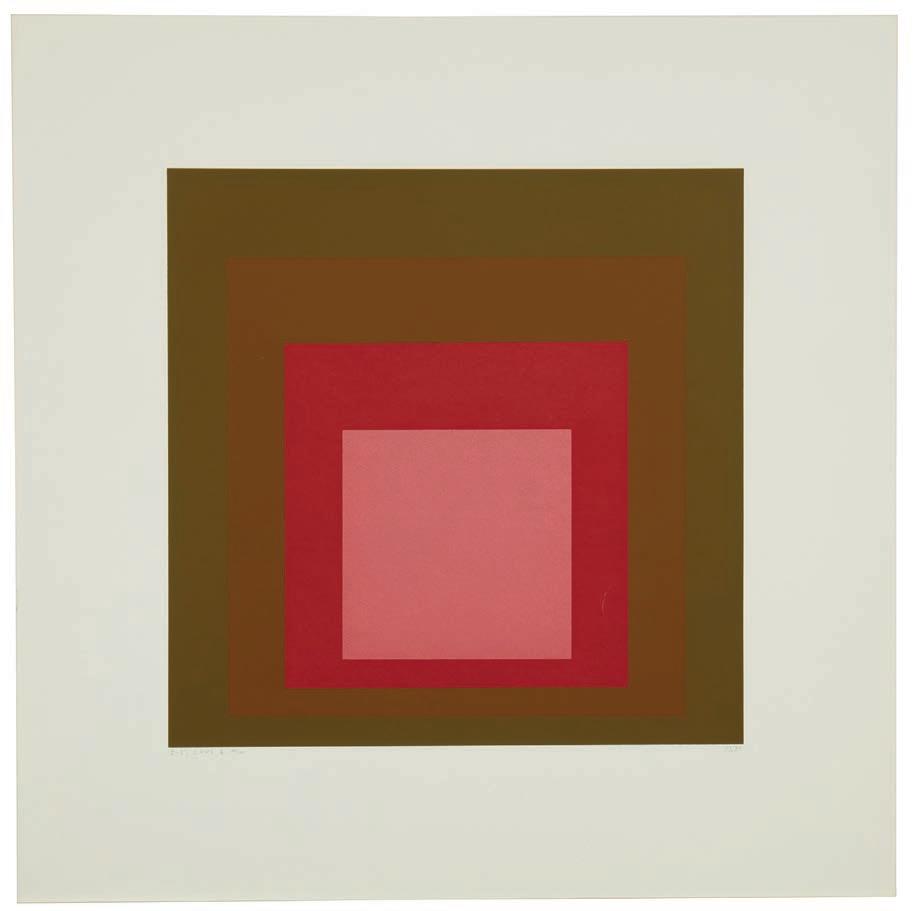
“I-S, LXXI b,” 1971
Screenprint in colors on American Etching paper Edition: 25/125
Signed with initials, titled, date, and numbered in pencil in the lower margin: JA; Ives-Sillman, Inc., New Haven, CT, pub. and with their blindstamp in the lower right margin corner Image: 15” H x 15” W; Sheet: 23” H x 23” W
$4,000-6,000
Provenance: Maximillian and Natasha Schell, Los Angeles, CA, Literature: Number 206 in the “Prints of Josef Albers Catalogue Raisonne”
Josef Albers (1888-1976)

“I-S, LXXI a,” 1971
Screenprint in colors on American Etching paper Edition: 25/125
Signed with initials, titled, dated, and numbered in pencil in the lower margin: JA; Ives-Sillman, Inc., New Haven, CT, pub. and with their blindstamp in the lower right margin corner
Image: 15” H x 15” W; Sheet: 23” H x 23” W
$4,000-6,000
Provenance: Maximillian and Natasha Schell, Los Angeles, CA,
Literature: Danilowitz 205
Harvey (b. 1973)

Untitled (Green Rolling Hills)
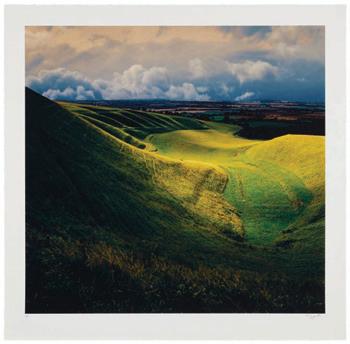
Edition: an artist’s proof, edition size and printing date unknown
Signed in pencil lower margin, at right: R. Weingarten; inscribed A.P. and with artist’s blindstamp in the lower margin, at left Image: 27.75” H x 29” W; Sheet: 32.125” H x 33” W
$1,200-1,800
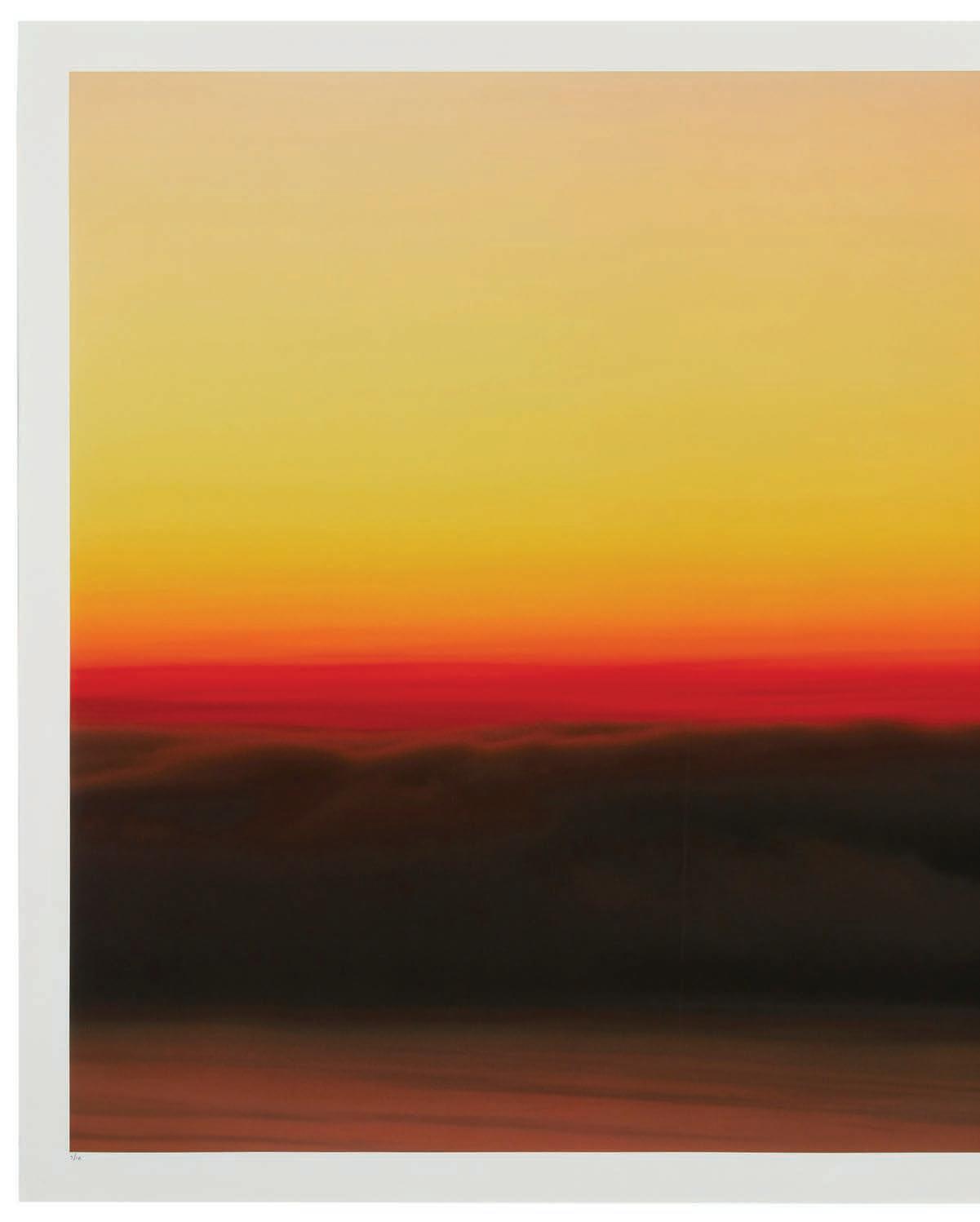
“6:30 AM Series 08/14/03, Malibu, CA, #77,” 2003
Digital color photograph on wove paper Edition: 7/10, printing date unknown
Signed in pencil lower margin, at right: R. Weingarten; numbered in pencil and with the artist blindstamp in the lower margin, at left; titled on the gallery label verso Image: 40” H x 40” W; Sheet: 44” H x 44” W
$1,500-2,500
Provenance: Marlborough Gallery, New York, NY

Doug Aitken, born in the coastal architectural interventions, and Design in Pasadena with a focus to New York City. This newfound sounds to immerse viewers years after moving to the city, (Spears, 2011). Many of Aitken’s through a lens of time and space. display of mundane, industrial, and completely transform the
The current LED lightbox installation a ubiquitous connotation, but Angeles (Phillips, 2019). The viewer reading “FATE” first,
Creating this layered feature there are fragments of a photograph; visual components of a parking LED lights above that has the and dissect. Above the LED colored orange horizon, giving fragmented parts to conclude personal accounts to create multidimensional content”
Aitken and his body of work, mediums. His works have been installation presents Aitkens’ of how time and space relate work to question whether they space and time presently inhabited.
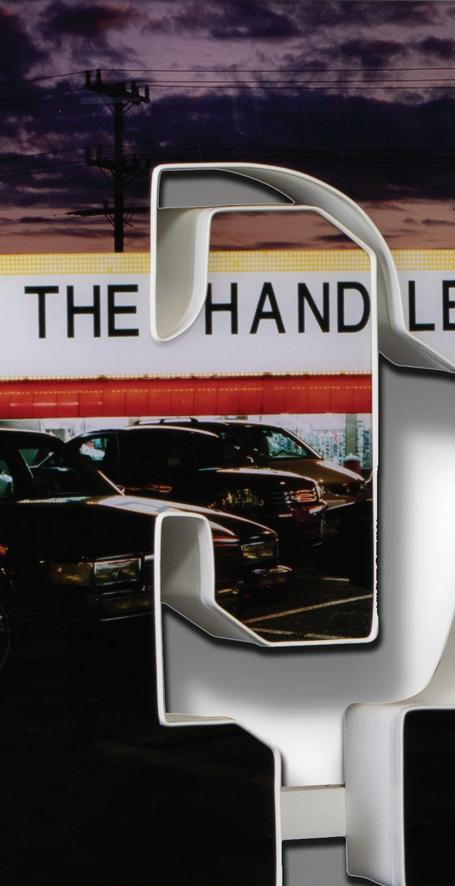
coastal town of Redondo Beach, California, is an American artist who creates works of various mediums, from installations, films, prints, and live performances. Aitken’s projects are considered thought-provoking and unparalleled. In 1987, he went to the Art Center College of focus on magazine illustration, where he finished in 1991 with a degree in Fine Arts. After his studies, Aitken left the west coast and moved newfound territory became an exploration of new artistic endeavors. He created his installations “using numerous screens, video feeds, and in an environment that fuses time and space, internal and external, and body and mind” (Artnet). In 1994, while still in New York, three city, Lisa Spellman, an art dealer, and owner of 303 Gallery, granted Aitken an opportunity to have his first gallery show in her New York Aitken’s multimedia pieces are large-scale sizes that revolve around the theme of how civilization and cultural elements affect our environment space. While also challenging the narrative of his pieces. Specifically, on the environment, through his work, he often creates a visual industrial, and the deterioration of landscape. Aitken intentionally produces direct dialogue with the viewer to accentuate the piece’s meaning the viewership into an illuminating experience. His works want the audience to contemplate the narrative directly he supplies visually.
installation stands almost 37-inches tall and is of four large letters that spell out the word “FATE.” Not only does the word “fate” itself have but it is intentional by Aitken himself. This piece was made in 2009 and included in Aitken’s debut exhibition at Regen Projects in Los The installation piece creates a horizontal narrative, where you read the lettering from left to right. However, the writing is layered, with the and then the viewer’s eyes follow the smaller font that reads across, “The Handle Comes up the Hammer Comes Down.” feature hones in the audience to the piece entirely, which was intentional and a common feature of Aitkens’ works. Continuing, on each letter, photograph; however, when they are together and in order, it forms a fragmented picture. This picture is modern- and present-day society— parking lot, with various cars parked in the foreground. As you move from the foreground to the middle, there appears to be a storefront with the text, “The Handle Comes up the Hammer Comes Down,” written. A very thought-provoking statement for the viewer to acknowledge sign is the sky filled with bundles of plum-colored clouds that scatter the mauve-colored sky, and just below the clouds is the lightly giving a hint of illumination. The visual landscape this created on the letters is easy to decipher, but Aitken only gives us enough of the conclude the environment displayed. Again, however, it is left to the viewers’ device to visualize the piece and tie in their thoughts, feelings, and a narrative. In the end, the viewer’s unique interpretations at that moment are welcomed as “the audience forms a relationship with his (Phillips, 2019)
work, especially his installations and film work, are the mediums he is best known for. He continually blurs the lines between different been displayed in various exhibitions around the world. Aitken, since 1994, is still with the 303 Gallery in New York City. The current Aitkens’ use of multimedia knowledge and talent, creating compelling pieces that spark an internal conversation with the viewer and awareness relate to society and landscape. Aitkens’ present work is a multidimensional piece with many layers to it. He challenges those who view the they are entirely present with the environment around them; this challenge comes with an exchange between the viewer, the work, and the inhabited.
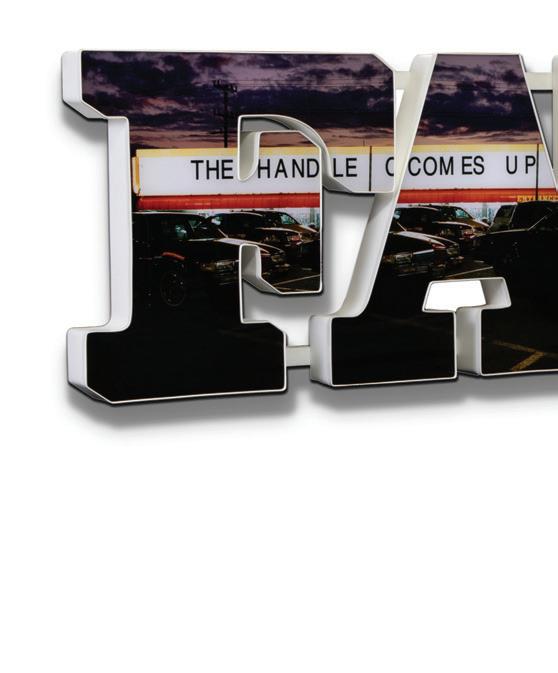

76
Katie Shapiro (b. 1983)
“Giant Steps,” 2016 Archival pigment inkjet print on paper Edition: 1/3, printing date unknown
Signed on artist label verso: Katie Shapiro 74” H x 46.5” W
$4,000-6,000
Provenance: Kopeikin Gallery, Los Angeles, CA
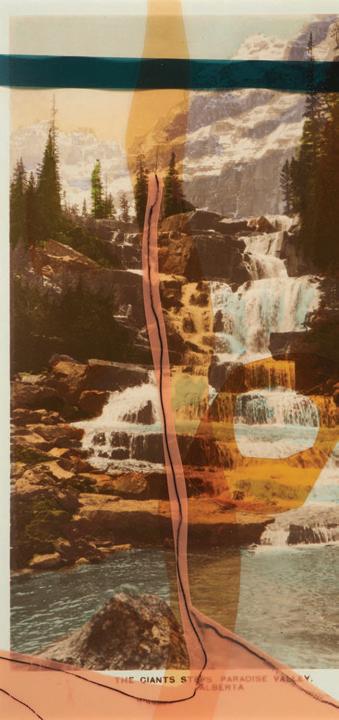
John Stezaker (b. 1949) “Mask CXLVI,” 2009 Photographic collage Signed in pencil on the verso of the matboard: J. Stezaker; titled and dated on a label affixed to the verso of the matboard 10.125” H x 8” W $4,000-6,000
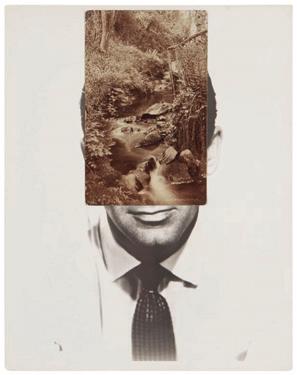
Provenance: Frederich Petzel Gallery, New York, NY
Notes: Information on the label affixed to the verso of the matboard indicates that this piece is either work or inventory number JST 13/001, or that this inscription is on the verso of the actual artwork.

John Stezaker (b. 1948)
“Pair XX,” 2010
Photographic collage
Signed and dated in pencil on the verso of the matboard: J. Stezaker; titled and dated on a label affixed to the verso of the matboard 9.125” H x 7.5” W
$5,000-7,000
Provenance: Frederich Petzel Gallery, New York, NY
Notes: Information on the label affixed to the verso of the matboard indicates that this piece is either work or inventory number JST 13/006, or that this inscription is on the verso of the actual artwork.


Thurman Rotan (1903-1991)
“Skyscrapers,” 1932 Gelatin silver print on paper

Signed and blindstamped lower right: Rotan / Thurman Rotan; titled and dated lower left; artist stamp verso; printed later Image: 10” H x 19.25” W; Sheet: 15” H x 19.875” W $800-1,200
Notes: This lot is accompanied by a notecard featuring, “Skyscrapers,” by Keith De Lellis Gallery, New York, NY.
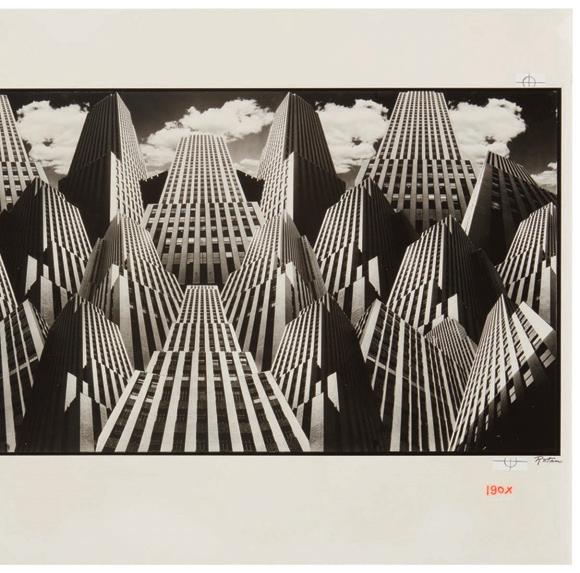
“Crisis in Capitol,” 1978, from the “Hollywood Moguls” series, 1976-1979
Offset of a photographic collage on paper, laid to Masonite as issued From the edition of unknown size
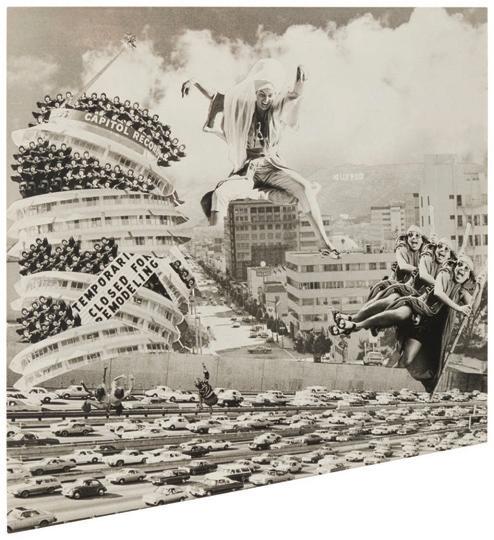
Appears unsigned Irrregular as issued: 48” H x 39” H x 43” W x 44” W
$1,000-1,500
Notes: According to the artist’s website: Punning on her own last name, “Hollywood Moguls,” is a series of photo collages (1976-1979) about literally breaking into and/or breaking open Hollywood: the Hollywood sign, Capitol Records, the historic Pantages Theater.
Richard Misrach (b. 1949)
“IPS #2521 (Someday),” 2011
Archival pigment print on Epson paper Edition: 3/7
Signed, titled, dated and numbered in black ink along the verso of the margin edge Image: 10.75” H x 14.375” W”; Sheet: 11.625” H x 16.5” W
$1,500-2,500
Provenance: Marc Selwyn Fine Art, Beverly Hills, CA



Overall good condition with scattered scuffs, light surface soiling from prior handling, inherent firing flaws, and inherent glaze imperfections commensurate with age. Scattered areas of browncolored grime/dust to incised decoration and at spout terminals with a 1” dried drip of brown substance to larger spout near handle. Museum putty to the underside. No evidence of repairs or restorations under blacklight.
2
Visual: Overall good condition. With inherent imperfections and variations in wood, commensurate with age and inherent with the creation process.
Blacklight: No evidence of restoration.
3
Overall very good condition. Scattered scuffs, scratches, nicks, shrinkage cracks, indentations, and separation at joints commensurate with age and inherent with the creation process.
4
Overall good condition commensurate with age.
5
Good condition. Not examined out of the frame.
Frame: 40.5” H x 58.5” W x 2” D
6
Very good condition. Hinged to the overmat with linen tape along the verso of the upper margin edge.
Framed under Plexiglas: 31” H x 31” W x 1.5” D
7
Good condition. The sheet is loose, attached to the back mat using removable, clear, archival corners.
Framed under Plexiglas: 20.5” H x 16.5” W x 1.5” D
8
Overall very good condition. One speck of printer’s ink in the lower left corner. Two faint 0.5” marks on the upper right margin. The sheet is loose, secured to the back mat with photographic corners and linen tape.
Framed under Plexiglas: 28” H x 22.75” W x 1.25” D
Overall very good condition. Very unobtrusive creases in the extreme corners of the margin. Secured to the back mat with clear photographic corners.
Framed under Plexiglas: 30” H x 24” W x 2” D
Visual: Good condition. Dust accumulation commensurate with age.
Blacklight: No evidence of restoration.
Frame: 39” H x 57” W x 2” D
Good condition. A very unobtrusive, pea-sized irregularity at the tip of the panel’s lower right corner, possibly inherent in the panel as originally painted.
Frame: 39” H x 57” W x 2” D
Overall good condition. A 0.25” H chip of the board and a 0.25” H resin crack on the tail-end of the board. Scattered surface scuffs and scratches, concentrated throught the edges and verso. Surface wear at the nose of the board conssumerate with age. Six velcro adhesives, and older tape and residue verso. Fins missing verso.
Good condition. Not examined out of the frame. Like the other verso details, the sheet size comes from the gallery label affixed to the frame’s backing paper.
Framed under Plexiglas: 37.5” H x 49.5” W x 1.25” D
14
Overall very good condition. Secured to the back mat with clear photographic corners.
Framed under Plexiglas: 21.25” H x 29” W x 1.5” D
15
Visual: Overall very good condition.
Blacklight: No evidence of restoration.
Unframed
Visual: Overall very good condition.
Blacklight: No evidence of restoration. Unframed
17
A few very small handling creases, two of which are in the image: one to the left of the background figure’s head, and one higher up, near the outer edge of the right door jamb. A 1.24” diagonal soft crease across the tip of the upper right sheet corner. A pea-sized spot of grime near the center of the upper black border, visible only in raking light. The sheet is loose, attached to the back mat using clear, archival mounting corners.
Framed under glass: 19.5” H x 26” W x 1.25” D
18
Overall very good condition. Not examined out of the frame.
Frame: 27.5” H x 41.25” W x 1.75” D
19
Very good condition. The work is loose, not mounted, inside the frame.
Framed under Plexiglas: 42” H x 62” W x 2” D
20
Very good condition. Framed under Plexiglas: 41” H x 28” W x 2” D
21
Very good condition.
Framed under Plexiglas: 24.5” H x 16.5” W x 2” D
22
Overall very good condition. Artist’s pinholes in the corners. Some handling creases throughout, likely intrinsic to the creation of the artwork.
Framed under Plexiglas: 28.75” H x 42.75” W x 2” D 23
Overall very good condition. Unframed
Visual of each: Good condition. The third element with very fine craquelure in the background throughout the lower portion.
Blacklight of ech: No evidence of restoration.
Each: Unframed
25
Visual: Overall very good condition. Minor scattered craquelure throughout. A 2” x 2” bulge with craquelure in the upper left corner. A 3” surface abrasion with paint loss in the upper right corner. Surface dirt and grime throughout.
Blacklight: No evidence of restoration.
Framed: 83” H x 83” W x 0.5” D
26
Visual: Good condition. A few flecks of paint loss scattered throughout. Surface dirt, grime and residue. The canvas is slightly loose.
Blacklight: No evidence of restoration.
Frame: 78” H x 147” W x 2” D
27
Visual: Overall good condition. Faint stretcher bar creases along the edges. Surface dirt, grime and discolored varnish throughout.
Blacklight: A few scattered pea-sized spots of touchup throughout with corresponding patches verso.
Frame: 29” H x 73.75” W x 2” D
28
Visual: Surface dirt and grime commensurate with age. Short lines of vertical craquelure thoroughout, attendant with the grain of the plywood. A 1” H x 0.75” W damage to the plywood panel with attendant paint loss of matching size, lower left corner. Occasional small paint losses, the largest approximately 0.5” H x 0.625” W, at the edge of the blue square, lower left. Pea-sized (or smaller) frame paint losses in places along the extreme edges of the plywood panel.
Blacklight: Apparently no restoration. Difficult to read under uneven varnish.
Frame: 36.5” H x 48.5” W x 1” D
Visual: Good condition.
Blacklight: No evidence of restoration. Unframed
30
Overall good condition. With dust and wear commensurate with age.
31
Visual: Scattered slight paint shrinkage and craquelure throughout. A pea-sized pigment loss in the woman’s bodice, left of center, and a rice-sized pigment loss near the lower portion of the left edge. Occasional, very unobtrusive specks of unrelated, pale pigment. The canvas puckered in the upper right and lower left corners. Dust accumulation and grime commensurate with age.
Blacklight: Certain pigments fluoresce slightly, but these appear to be in the hand of the artist.
Frame: 33” H x 28.75” W x 1.75” D
32
Visual: Good condition. An unobtrusive, rice-sized pigment loss below the tree at left that appears to be in the hand of the artist. A very delicate and unobtrusive, 1” long, horizontal, hairline surface scratch near the center of the left edge.
Blacklight: No evidence of restoration. Difficult to read under varnish.
Frame: 16.75” H x 11” W x 1.25” D
33
Overall good condition with minor scuffs and oxidation to bronze commensurate with age. With two holes to the legs for mounting on a base.
34
Overall very good condition. Dry mounted to gallery board backing. Very slight unobtrusive creases in the extreme lower left and right corners. A 0.25” tear at the lower left edge, just into the image. The sheet is loose, secured to the back mat with photographic corners with linen tape.
Framed under Plexiglas: 23.25” H x 19.25” W x 1” D
35
Overall very good condition. Full margins. Dry mounted to gallery board. A 1.25” W crease in the lower left margin.
Framed under Plexiglas: 23” H x 19” W x 1” D
36
Overall good condition. A few nicks along the margin edges. One pea-sized spot of surface residue in the lower right margin corner. The sheet is loose, secured to the back mat with clear photographic corners.
Framed under Plexiglas: 23.5” H x 19.25” W x 1” D
37
Overall fair to good condition with scuffs, surface scratches and abrasions, oxidation, inherent casting imperfections, and surface wear commensurate with age. Two areas of damage to the surface finish to the top, apparently from prior adhesive tape, the largest 2.75” x 1.25”, and a small spot of red paint.
38
Good condition. Time staining at the extreme sheet edges. Framed floating, mounted to the backboard at the verso of the upper sheet corners.
Framed under glass: 16.5” H x 12.5” W x 1” D
39
Good condition. The full sheet with deckled edges. The sheet is slightly toned. There is an approximately 0.5” H x 1” W area near the center of the lower edge, where the paper surface protrudes slightly, attendant with hinging verso. Several minor and very unobtrusive surface scuffs, the longest approximately 0.25”, visible only in raking light. Framed floating and hinged to the back mat from the verso of the upper and lower sheet edges.
Framed under glass: 53” H x 39” W x 1.75” D
40
Very good condition. Apparently full margins, deckled along the left and right edges. Slight time staining and very minor surface soiling commensurate with age along the margin edges. A soft crease at the tip of the lower right margin corner. Framed floating, hinged in various places to the back mat from the verso of the margins.
Framed under Plexiglas: 29.25” H x 37” W x 1” D
Good condition. The artist’s board very slightly time stained along the edges, commensurate with age. Minor creasing to the extreme tips of the upper and lower right corners. Framed floating, mounted to the back mat.
Framed under Plexiglas: 21” H x 29.5” W x 1.5” D
42
Visual: Overall very good condition.
Blacklight: A few scattered lines of touch up, concentrated mainly in the lower third, the largest is pea-sized.
Frame: 36” H x 26” W 3” D
43
Visual: Good condition. Surface dirt and grime commensurate with age.
Blacklight: No evidence of restoration.
Frame: 28” H x 32.5” x W x 1” D
44
Overall good condition. Abrasion with paintoss in the upper left and right corners. With other surface abrasions along the all four edges.
Blacklight: No evidence of restoration.
Frame: 45.5” H x 59” W x 1” D
45
Good condition. Overall slight toning recto and verso. Occasional scattered handling creases showing mostly near the outer edges of the composition. Taped to the overmat with linen tape in five places, verso.
Framed under glass: 17” H x 22” W x 1.25” D
46
Overall good condition with shelf wear, scattered minor scuffs, and inherent firing flaws commensurate with age. With typical, inherent crazing to the glaze. with attendant small ruptured air bubbles and pinholes to the surface.
47
Visual: Overall very good condition. Surface dirt throughout. Minor, stable paint cracking throughout. An area of possible unstable craquelure in the center white impasto. One pea-sized pigment loss in the lower left.
Blacklight: No evidence of restoration.
Frame: 52.75” H x 62.75” W x 2” D
48
Visual: Good condition. Craquelure in some of the white elements. An area of flaking and paint loss in the white element upper right.
Blacklight: No evidence of restoration.
Unframed
49
Visual: Overall very good condition. Surface dust throughout.
Blacklight: No evidence of restoration.
Frame: 64.5” H x 84” W
50
Visual: Good condition. Dust accumulation commensurate with age.
Blacklight: No evidence of restoration
Frame: 31.5” H x 31.5” W x 2.25” D
51
Overall good condition with scattered minor surface scratches, scuffs, and dust accumulation commensurate with age. The sculpture wobbles very slightly on its base.
52
Overall good condition, the polished surface oxidized and with scattered minor surface scratches and scuffs commensurate with age. Two fairly unobtrusive, ricesized spots of white paint on the ovoid portion of the form. Secured to the enameled based with screws.
Visual: Good condition. Dust accumulation and grime commensurate with age. Horizontal stretcher bar crease showing slightly across the center. An unobtrusive, rice-size pigment loss at center. A scattered and faint 1.5” H x 0.25” W surface scuff near the lower left corner. Occasional very small areas of unpainted canvas along the edges, primarily the left edge, most of which appear to be in the artist’s own hand.
Blacklight: No evidence of restoration. Difficult to read under uneven varnish.
Frame: 32” H x 23.75” W x 1” D
54
Visual: Good condition. Surface dirt and grime commensurate with age. An approximately 7.5” H x 0.5” W surface scuff in the varnish layer at the lower center. Some scattered small areas of paint loss, mostly attendant with the artist’s nail holes around the perimeter, the largest two approximately peasized at upper center and also upper left. A very delicate and unobtrusive 1” H x 0.75” W L-shaped surface scratch near the top of the extreme left edge. Occasional frame abrasions and wear to the Masonite along the edges and corners.
Blacklight: No evidence of restoration. Difficult to read under uneven varnish.
57.5” H x 6”-8” W x 2” D
56
With wide margins, irregularly cut on all sides. The sheet slightly cockled, showing mostly at the margin edges. Some unobtrusive, extremely pale blue staining in the image. A speck of grime in the lower left quadrant. Scattered irregular specks and delicate lines scattered throughout the emulsion, a few of which appear to be skillfully touched-in. Pinholes in each of the upper margin corners. The tip of the upper right margin corner is missing. Remains of hold hinging in the lower margin corners, verso. Hinged to the back mat at the verso of the upper margin edge.
Framed under Plexiglas: 36” H x 48” W x 1.5” D
57
Each: Good condition. Framed floating in the frame.
Each framed under glass: 31” H x 44.5” W x 2.75” D
58
Overall very good condition. Very slight unobtrusive creases in the extreme lower left and right corners. The sheet is loose, secured to the back mat with photographic corners with linen tape.
Framed under plexiglass: 23.25” H x 19.25” W x 1.25” D
59
Overall very good condition. Very slight unobtrusive creases in the extreme corners. Along the upper right edge of the margin there is a 0.5” abrasion. The sheet is loose, secured to the back matte with photographic corners with linen tape.
Framed under Plexiglas: 23.25” H x 19.25” W x 1” D
60
Overall very good condition. Dry mounted to gallery board backing. Very slight unobtrusive creases in the extreme upper left margin. A few minor paper dents in the upper right and lower right. The sheet is loose, secured to the back mat with photographic corners with linen tape.
Framed under Plexiglas: 23.25” H x 19.25” W x 1.25” D
61
Overall good condition with dust accumulation commensurate with age and use. Small chips to the corners of the glass.
62
Overall good condition. Edges are frayed and gold paint in the image likely intrinsic in the creation of the artwork. Hinged in the upper right and left corners.
Framed under glass: 8.25” H x 10.25” W x 1” D
63
Overall very good condition. In archival photo corners. Not examined out of the frame.
Framed under Plexiglass: 5.5” H x 4.5” W x 0.5” D
64
Condition report available upon request.
Good condition. Occasional tiny inclusions and air bubbles inherent in the original process. The upper, centermost bead with what appears to be an approximately rice-sized chip or tiny irregularity on the inside of its hole, most likely dating to the time of manufacture. Scattered very minor and unobtrusive surface scuffs and scratches.
H x 20.375” W x 4.625” D
66
In good condition. Scattered and very minor unobtrusive surface scuffs and scratches. Occasional tiny air bubbles and inclusions from the original process. Minor dust and grime on the glass.
26” H x 6” W x 6” D
67
Overall very good condition. Paper with deckled edges. A 0.5” crescent shaped puncture in the lower right corner. Minor and unobtrusive tears along the edges, inherent to the aging process.
Framed under Plexiglas: 89.5” H x 77.5” W x 2” D
68
Overall good condition with scattered scuffs, surface scratches, and dust commensurate with age. Some of the interior objects with lifting and small flaked losses to gold paint. Wiring should be checked by a qualified electrician prior to use.
69
Condition report available upon request.
70
Good condition. An approximately 1” long, very delicate and unobtrusive, hairline-type, uninked line to the right of center in the second smallest red square. Slight overall toning to the paper, commensurate with age. Pale backboard staining, verso. The sheet is loose, not mounted.
Framed under glass: 24.25” H x 24.25” W x 1” D
Good condition. An unobtrusive, light surface scuff, to the right of center, in the second smallest green square, visible only in raking light. Slight overall toning to the paper, commensurate with age. Time staining along the extreme upper margin edge. Pale backboard staining, verso. The sheet is loose, not mounted.
Framed under Plexiglas: 24.25” H x 24.25” W x 1” H
72
Very good condition.
Unframed
73
Overall very good condition. Full margins with deckeled edges. Secured to the back mat with three photographic corners.
Framed under Plexiglas: 39.75” H x 40.25” W x 1.25” D
74
Overall very good condition. With wide margins. Not examined out of the frame.
Framed under Plexiglass: 46” H x 46” W x 2” D
75
Overall good condition. Occasional scattered minor scuffs and scratches commensurate with age.
76
Overall very good condition. Not examined out of the frame.
Framed under Plexiglas: 74.75” H x 48” W x 2” D
77
Good condition. Scattered very soft handling creases throughout, visible only in a raking light. Other creases showing mostly along the edges and corners of both of the photographs used for this collage, all possibly attendant with the artist’s original choice of materials. A 0.25” W edge tear near the bottom of the right edge. Framed floating, mounted to the back mat.
Framed under Plexiglas: 21” H x 16.5” W x 1.75” D
Good condition. Scattered very soft handling creases throughout, visible only in a raking light. Other creases showing mostly along the edges and corners of both of the photographs used for this collage, the largest approximately 4.375” showing diagonally across the lower left corner, all possibly attendant with the artist’s original choice of materials. A 0.25” H edge tear near the right corner of the upper edge. Framed floating, mounted to the back mat.
Framed under Plexiglas: 21” H x 16.5” W x 1.75” D
79
Overall good condition with full margins. A 1” tear in the upper right corner. A 1.75” line of faint surface abrasion in the lower margin. Scattered, tiny, and unobtrusive nicks along the edges. Four registration stickers adhere to the four corners, with archival tape marked: 190 1/1. Secured to the back mat with corners.
Framed under glass: 22.5” H x 31.5” W x 1.25” D
80
Good condition. A few specks of unobtrusive grime, showing mostly at the lower left.
Unframed 81
Very good condition. The sheet is loose, mounted to the back mat with clear, archival corners.
Framed under Plexiglas: 19” H x 22.625” W x 1.75” D
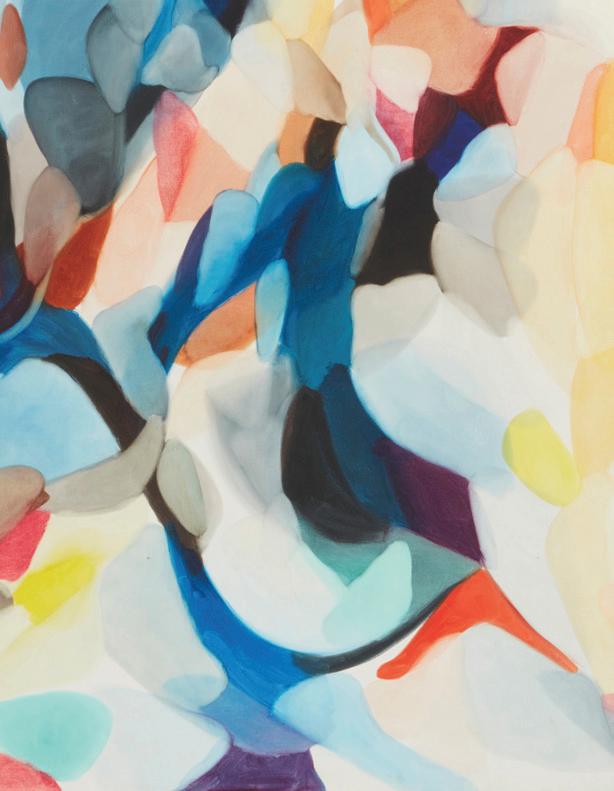

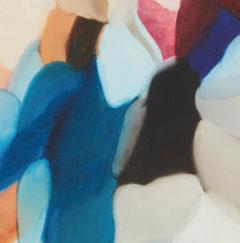




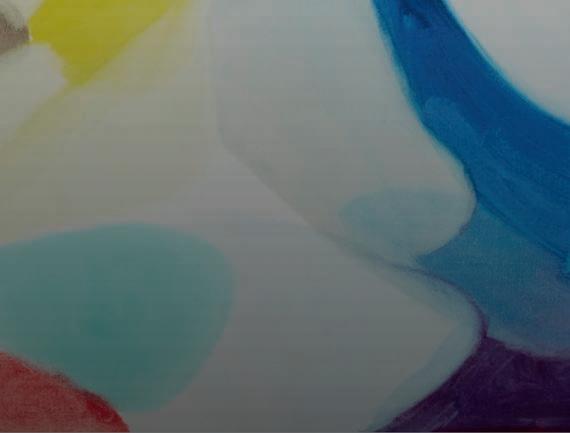
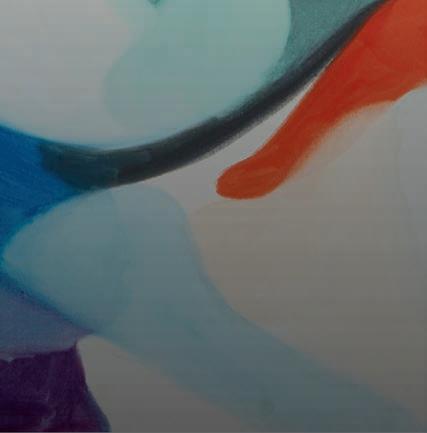
Head of Sale, Senior Vice President
Morgana Blackwelder AAA Fine Art Director Jenny Wilson
President, Auctioneer Jeffrey J. Moran
Post-War & Contemporary Fine Art Specialist Hayden Hunt
20th Century Design Specialist Matthew Grayson Fine Art Cataloguer Anne Spink Fine Art Cataloguer Madison Ari Junior Specialist / Senior Fine Art Cataloguer Bobby Cullen
Vice President, Furniture & Decorative Arts Director
Roland Rynkiewicz Silver, Western, and American Indian Specialist Maranda Moran Silver, Western and American Indian Cataloguer Sally Andrew
Senior Fur niture & Decorative Arts Cataloguer Shannon Dailey Fur niture & Decorative Arts Cataloguer Sarah Beaver
Jewelry Director Mollie Burns Keith, G.J.G
Office Manager Mario Esquivel
Client Services Ella Fountain
Finance Administrator Jamie Holthauser
Vice President, Business Director, Auctioneer Stephen Swan Finance & Human Resources Director Maha Darwish Consignment Coordinator Jean Rapagna Operations Coordinator Ian Anderson Art Handler Joe Miranda Art Handler Richard Corral Art Handler Angel Sanchez Art Handler Jacob Baer Art Handler Alek Ellis
Advertising & Marketing Director, Art Design Nathan Martinez Brenda Smith
PR Manager/Social Media Graphic Designer Brian Olivas
Photographer Keith Berson
Photographer Madison Torres
Photographer Michael Mizerowski
Department Administrator Melissa Brownell
Founder John H. Moran (1942-2017) Co-Founder Madeleine Moran
This catalogue is meant merely as a guide.
The Auctioneers do not warrant the accuracy, genuineness, authenticity, description, weight, count or measure of any of the lots specified herein.
BUYER’S PREMIUM is calculated at 25% on the first $500,000 of the hammer price, plus 18% on any amount between $500,001 - $1,000,000, and 15% on any amount above $1,000,000 when paying by cash, check or wire transfer.
Credit card payments will be subject to an additional 3.5% acceptance fee. This fee is not more than the cost of accepting these cards.
Buyers outside of the United States must submit payment via wire transfer. Credit cards are not an accepted form of payment for buyers outside of the United States.
$100 - $475 @ $25 increments
$500 - $950 @ $50 increments
$1,000 - $1,900 @ $100 increments
$2,000 - $4,750 @ $250 increments
$5,000 - $9,500 @ $500 increments
$10,000 - $19,000 @ $1,000 increments
$20,000 - $47,500 @ $2,500 increments
$50,000 - $95,000 @ $5,000 increments
$100,000 - $190,000 @ $10,000 increments
$200,000 - $480,000 @ $20,000 increments
$500,000 & above @ $50,000 increments, or at Auctioneer's discretion.
Download Moran Mobile today at the App Store and Google Play!
Except as otherwise stated, John Moran Auctioneers Moran's) acts as agent for the seller. The contract for the sale of the property is therefore made between the seller and the buyer.
(a) Public Preview: All property is available for inspection by public preview during the day of auction. In many cases, particular lots can be examined in advance by private appointment. Prospective buyers are strongly encouraged to personally examine any property in which they are interested.
(b) Buyer's Responsibility: Buyers are responsible for determining to their own satisfaction the true nature and condition of any lot prior to bidding. Though buyers are not legally required to inspect lots prior to purchase, failure to do so may constitute a waiver of complaint that an item was not delivered in a condition equal to the existent condition at the auction.
(c) Property Sold 'As Is': Neither Moran's nor the seller provides any guarantee in relation to the nature of the property, or to any errors or omissions in the catalogue or supplemental material apart from the Limited Warranty stated below. Condition reports are offered as a courtesy and are typically published in Moran's catalogue or can be made available upon request. The absence of a condition report does not imply than an item is free from defects or restoration, nor does a reference to particular defects imply the absence of others.
(a) Admission: The auction is open to the public, though Moran's reserves the right to refuse admission or participation to anyone at any time. The auctioneer may be recorded (visually, aurally or otherwise) and all participants consent to such recording.
(b) Buyer Registration: Prospective buyers must register with Moran's before bidding. Moran's may require identification and financial references in advance of buyer eligibility. Registered bidders accept personal liability to pay the purchase price, including the buyer's premium plus all applicable charges, unless Moran's agrees in advance that the bidder is acting as agent on behalf of an identified third party acceptable to Moran's. In such case, Moran's will look to the third party for payment.
(c) Bidding Guidelines: Bidding, whether in person, by agent, absentee bid, telephone, or internet, constitutes a bidder's acceptance of these conditions. The highest bidder acknowledged by the auctioneer shall be the buyer. The auctioneer retains the absolute right to reject any bid, to withdraw, pass or divide any lots, to combine multiple lots, to advance the bidding at his or her absolute discretion and (in the case of error or dispute, whether during or after the sale) to determine the successful bidder, to continue the bidding, cancel the sale or to re-offer and sell the lot in question. Under no circumstances are the consignors' or agents acting on their behalf, permitted to bid on their consignment. In the event of any dispute after the auction Moran's sale record shall be conclusive.
(d) Absentee, Telephone and Internet Bidding: Moran's offers absentee, telephone and internet bidding as a convenience to clients and does not accept liability for errors or failures to execute such bids. Absentee and telephone bids must be recognized by Moran's prior to auction day. When identical absentee bids are submitted that become the highest bids at the auction, the bid first received by Moran's shall be accepted as the winning bid. Telephone bidders are encouraged to leave minimum bids in case of technical failure.
(e) Reserves: Unless indicated otherwise, lots may be offered subject to a reserve, which is the confidential minimum price below which the lot will not be sold. The reserve for any lot shall not exceed its published estimate. Moran's shall act to protect the reserve by bidding through the auctioneer, who may open bidding on any lot below the reserve by placing a bid on the seller's behalf. The auctioneer may continue to bid on behalf of the seller up to the reserve amount, either by placing consecutive bids or by placing bids in response to other bidders. Lots without reserves are typically opened for bidding at 50% of their low estimate. In the absence of a bid at that level, the auctioneer may proceed backwards at his discretion or deem the lot unsold if a bid is not recognized.
(a) Payment and Title Transfer: The buyer agrees to pay the sum of the hammer price plus Buyer's Premium, plus any applicable sales tax. Buyer's Premium is calculated as follows: 25% on the first $500,000 of the hammer price, plus 18% on any amount between $500,001 - $1,000,000, and 15% on any amount above $1,000,000 when paying by cash, check or wire transfer. Successful bidders using Live Auctioneers platform will be charged a Buyer’s Premium of: 30% on the first $500,000 of the hammer price, plus 23% on any amount between $500,001 - $1,000,000, and 20% on any amount above $1,000,000 when paying by cash, check or wire transfer.
Credit card payments will be subject to an additional 3.5% acceptance fee. This fee is not more than the cost of accepting these cards. Buyers outside the United States must submit payment via wire transfer. Credit cards are not an accepted form of payment for buyers outside the United States. Buyers are strongly encouraged to provide full payment at the auction. Payment must be received by Moran's within five business days immediately following the auction. The buyer shall not acquire title or take possession of the lot until all amounts (including the hammer price, premium and applicable taxes) due to Moran's have been paid in full.
(b) Collection: Buyers are strongly encouraged to collect purchased items from the sale site at the time of the auction. Packing material and labor are provided free of charge at the sale site during the auction. Packing and handling of purchased lot is undertaken by Moran's solely as a convenience to customers. Moran's is not liable for damage to property, regardless of cause, in connection with this courtesy service
(c) Storage: Following the auction, uncollected lots shall be relocated to and stored in Moran's warehouse. Moran's shall retain possession of all purchases until full payment has been received from the buyer. Lots remaining uncollected after the fifth business day following the sale, regardless of payment status, are subject to a per-lot daily storage charge of $10.00. In addition to other remedies available by law, Moran's reserves the right to impose upon delinquent buyers a separate 1% monthly charge (of the
purchase price, or the maximum permitted by law) commencing on the sixth business day after the sale date.
(d) Shipping: Buyers are responsible for arranging their own shipping estimates and deliveries. Moran's in our discretion and as a courtesy to buyers, can arrange to have purchased lots packed, insured and forwarded by a third-party shipper at the request, expense and risk of the buyer. Moran's assumes no responsibility for acts or omissions in such packing or shipping by other packers or carriers, even if recommended by Moran's. Nor does Moran's assume any responsibility for any damage to picture frames or to the glass therein. In circumstances where Moran's arranges for such third-party services, Moran's may apply an administration charge of 15% of that service fee.
(e) All Sales Final: Notwithstanding other terms mentioned herein, refunds shall be given at Moran's sole discretion. Refunds requested on the grounds of authenticity must be made within 10 days of the auction and accompanied by a supporting written statement from a recognized authority (defined as a person who has authored, edited, or substantially contributed to a monograph on the artist, a person who has curated, organized or substantially contributed to a solo exhibition on the artist, a person who has represented the artist's estate or someone who represented or worked closely with the artist while they were alive and, in any of the above instances physically handled works of the period, medium and subject matter in question during the course of their duties) stating that the object sold is incorrect or not the work of the artist. Dealers, appraisers and representatives of other auction firms do not qualify as authenticators of individual artists unless they have had such specific involvement with that artist's work, as specified above, in addition to their daily duties. Refunded lots must be returned to Moran's in the same condition as when sold. Moran's does not grant extensions to refund considerations based upon authenticity due to shipping delays. There are no exceptions to this refund policy.
(a) Liability: The buyer expressly agrees that (i) neither Moran's nor the seller shall be liable, in whole or in part, for any special, indirect or consequential damages, including, without limitation, loss of profits and (ii) the buyer's damages, if any, are limited exclusively to the original purchase price paid for the lot.
(b) Limited Warranty: All property is sold as is. Neither Moran's nor the consignor or our associates make any representation, express or implied warranty (including merchantability and fitness) or guarantee in condition, age, size, provenance, medium, signature, inscription, exhibition history, importance, rarity, country of origin, genuineness, historical relevance, monetary or other value, framing or lack thereof, mounting, conservation, coloring, palette, inscription, edition, style, label or other descriptor. No statement in the catalogue, brochures, website, bill of sale or invoice, any supplementary material, or statements by any Moran's employee shall be deemed such a warranty or representation or an assumption of liability.
(c) Descriptions: No warranty, whether express or implied, is made with respect to any description contained in this auction or any second opinion. Any description of the items or second opinion is for the courtesy of identifying the items for those Bidders who do not have the opportunity to view the lots in person, and no description of items has been made part of the basis of the transaction or has created any express warranty that the goods would conform to any description made by the Auctioneer. Color variations can be expected in any electronic or printed imaging and are not grounds for the return of any lot.
(d) Estimates: All estimates provided are carefully considered opinions of Moran's specialists, and are merely suggested guidelines for interested buyers. Buyers must be aware that all property sold is subject to fluctuating values depending on the subjective interests of collectors and a wide variety of other uncontrollable factors. The lots auctioned may sell at prices above, within, or below estimate.
(e) Regulated Species: Lots with a "◊" symbol in the printed or digital catalog, or noted within the condition report of a lot, may contain regulated plant or animal materials and could be subject to certain import or export restrictions. It is the buyer’s responsibility to investigate any such restrictions and obtain any required import or export permits / licenses. The inability to obtain any such document(s) is not grounds for requesting a refund nor does it negate the buyer from making full payment for their purchase.
(f) Notices, Demands and Refunds: Any demands for refunds, problems with the lot(s) sold or notices of any kind concerning the auction shall be in writing and addressed to John Moran Auctioneers, Inc, 145 East Walnut Avenue, Monrovia, CA 91016.
(a) Copyright: The copyright on all images, illustrations and written material produced by or for Moran's for this auction is and shall remain at all times the property of Moran's. Moran's and the seller make no representation or warranty that the buyer will acquire any copyright or reproduction rights to a purchased lot.
(b) Buyer's Breach of Conditions: If a buyer fails to comply with any of these conditions, Moran's may, in addition to asserting all remedies available by law, including the right to hold that buyer liable for the purchase price, (i) cancel the sale, retaining as liquidated damages any payment made by the buyer, (ii) resell the property without reserve at public auction or privately upon notice to the buyer, or (iii) take such other action as we deem necessary or appropriate. If Moran's resells the property, the original defaulting buyer shall be liable for the payment of any deficiency between the original sale price and any subsequent mitigation sale, including warehousing, the expenses of both sales, reasonable attorney's fees, commissions, incidental damages and all other charges due hereunder. In the event that such buyer pays a portion of the purchase price for any property, Moran's shall apply the payment received to such property that Moran's in our sole discretion, deems appropriate. Moran's shall have the benefit of all rights of a secured party under the Uniform Commercial Code adopted in the State of California.
(c) Severability: Should any of these conditions be deemed unenforceable, invalid or illegal in any court having jurisdiction, that part shall be discounted and shall have no effect on the enforceability of the remaining provisions contained herein, which shall remain valid to the fullest extent permitted by law.
(d) Jurisdiction: The rights and obligations of the parties with respect to these conditions and the conduct of the auction shall be governed and interpreted by the laws of the State of California. By bidding, whether in person or by agent, by absentee bid, telephone, internet or other means, the buyer shall be deemed to have consented to the exclusive jurisdiction of the courts of the state of California or, if applicable, the federal courts sitting in this state. Further, the buyer agrees that the venue for any action arising out of the failure to abide by these conditions, or any conduct related to or arising out of the auction, shall be the Los Angeles Superior Court, North East Branch located at 600 Olive Street, Burbank, California.
